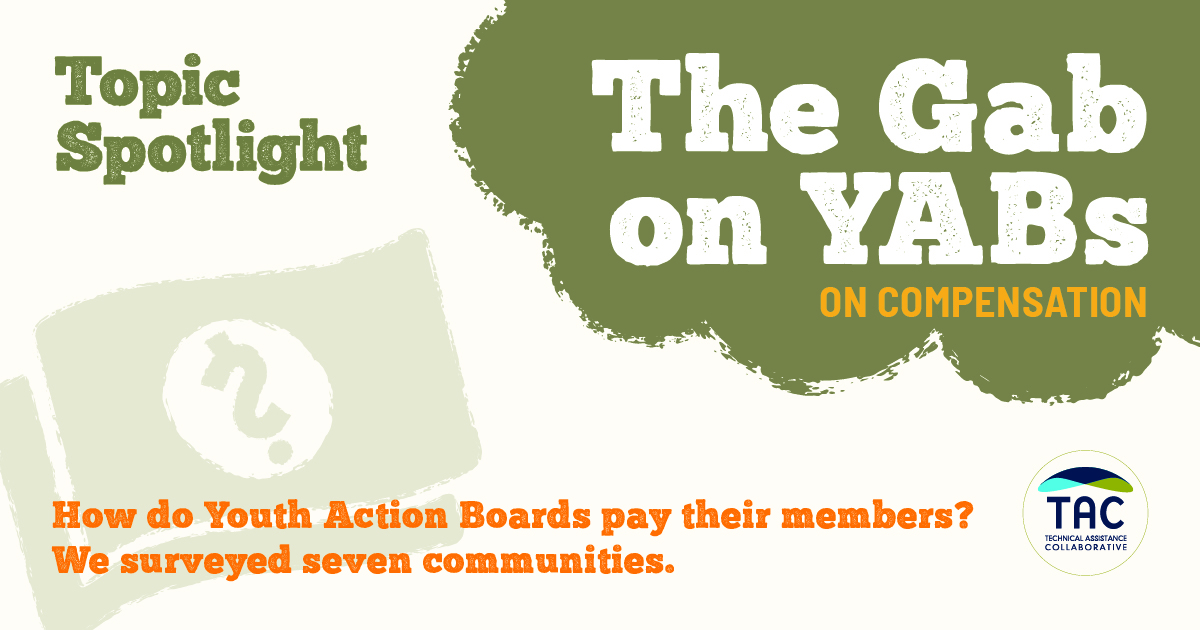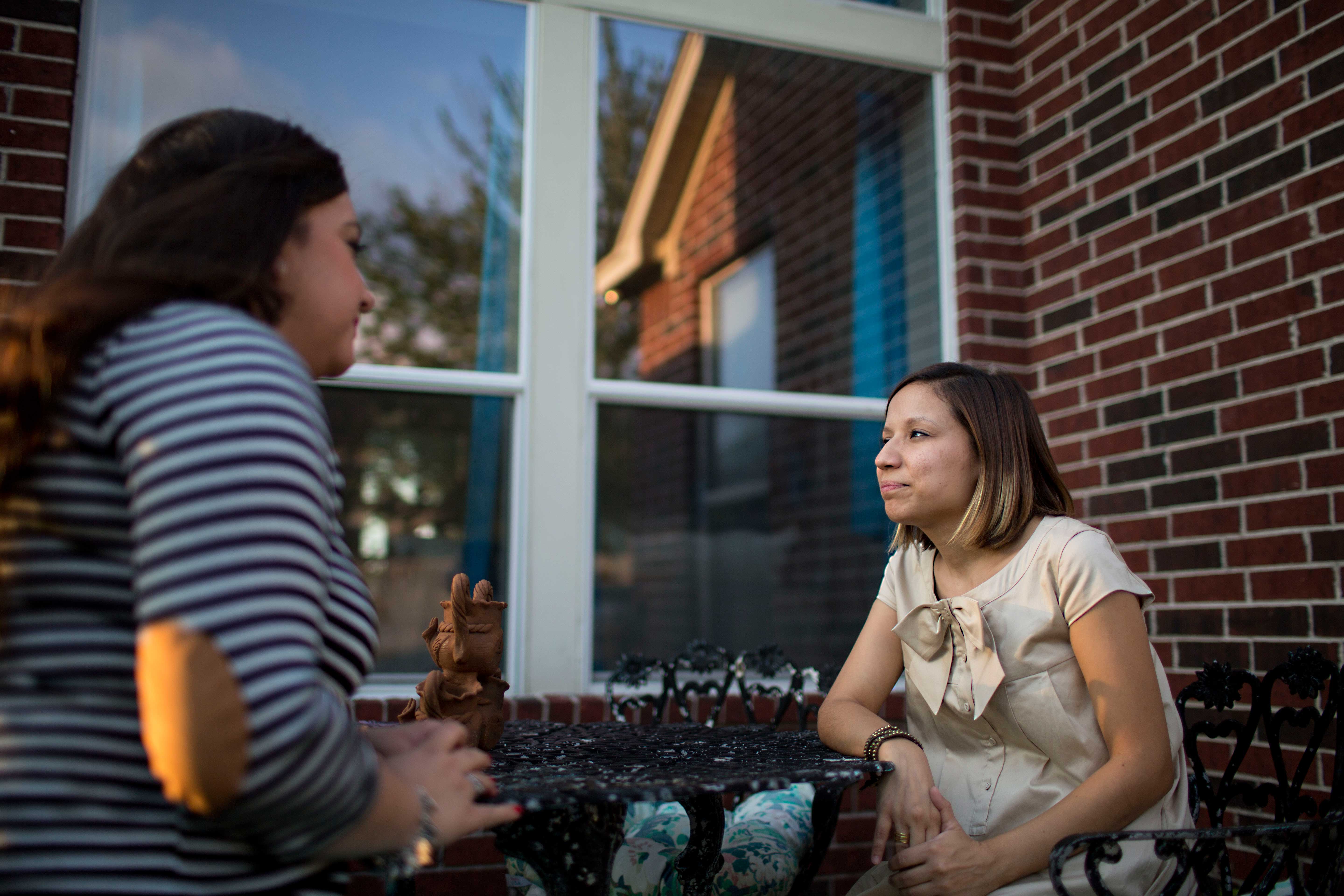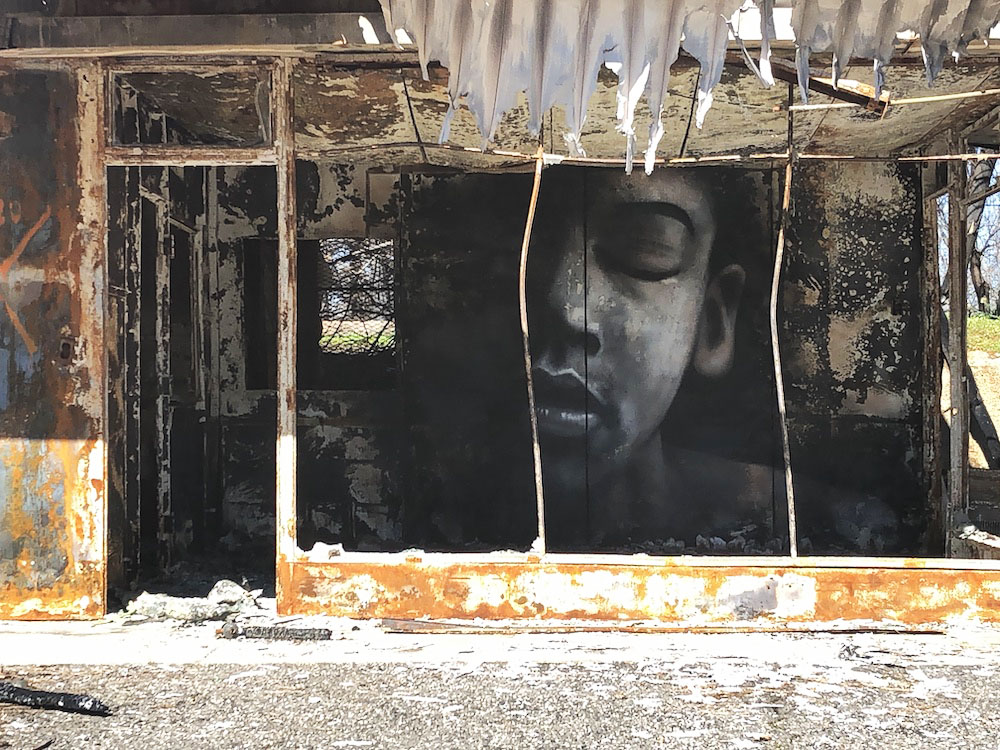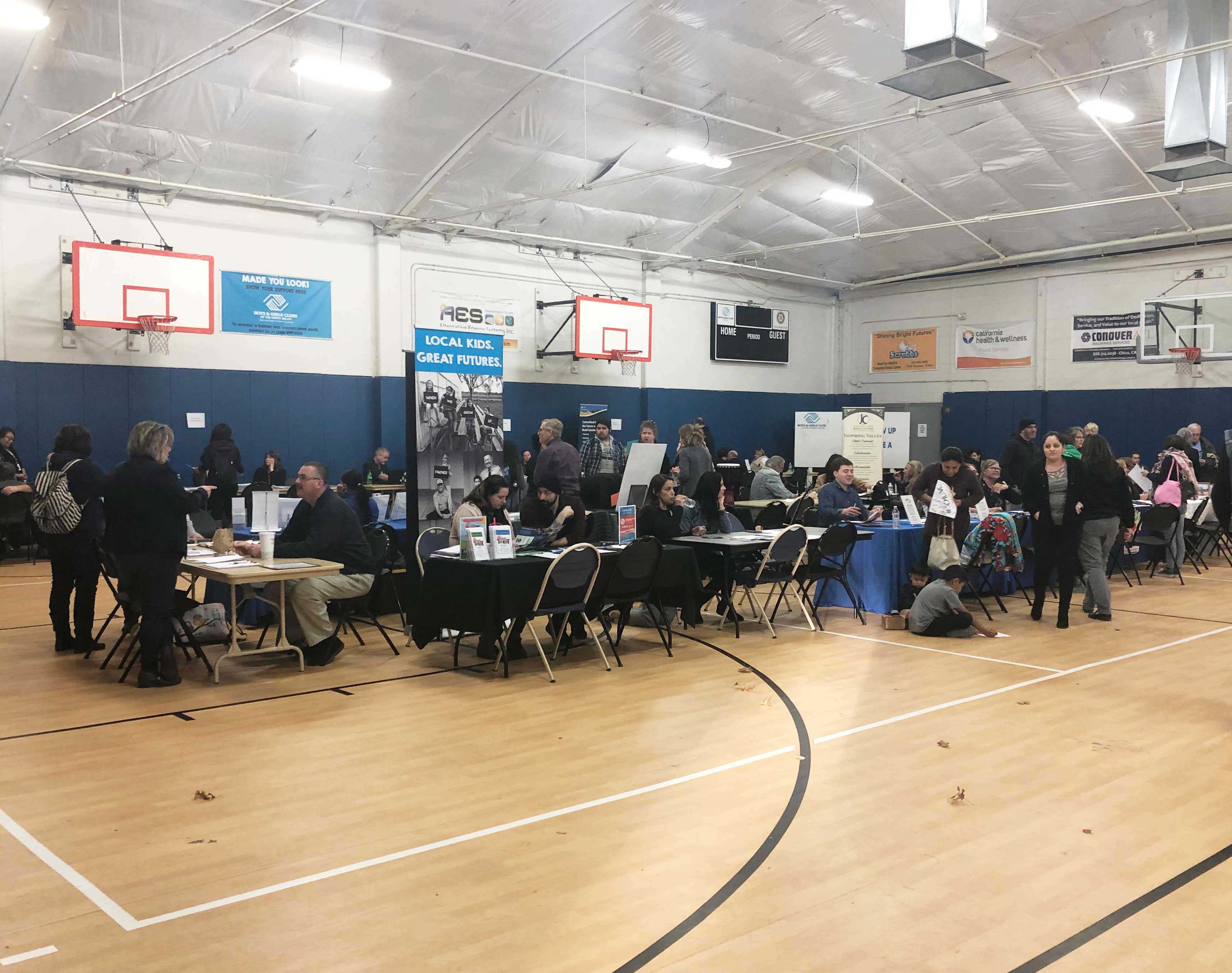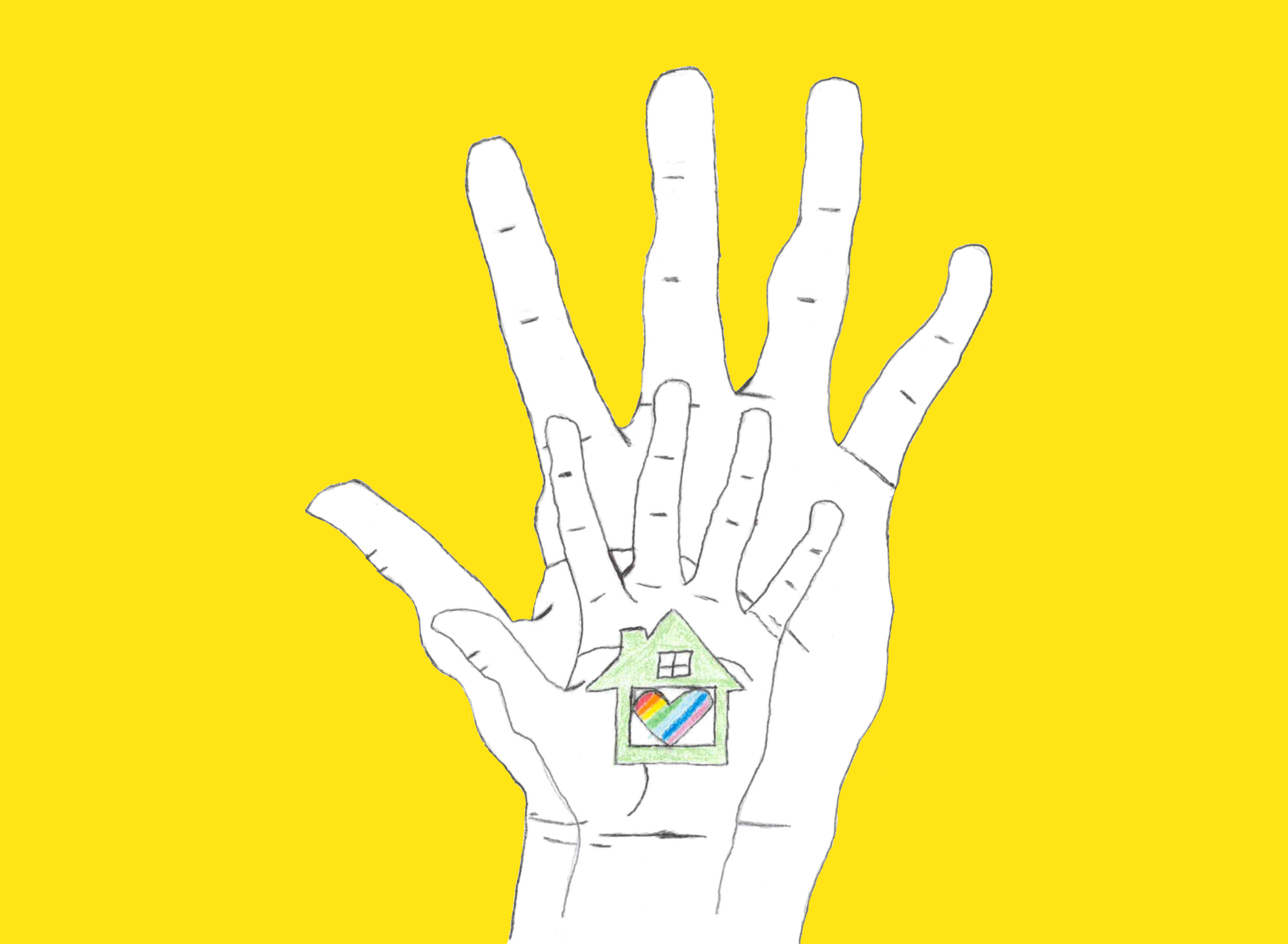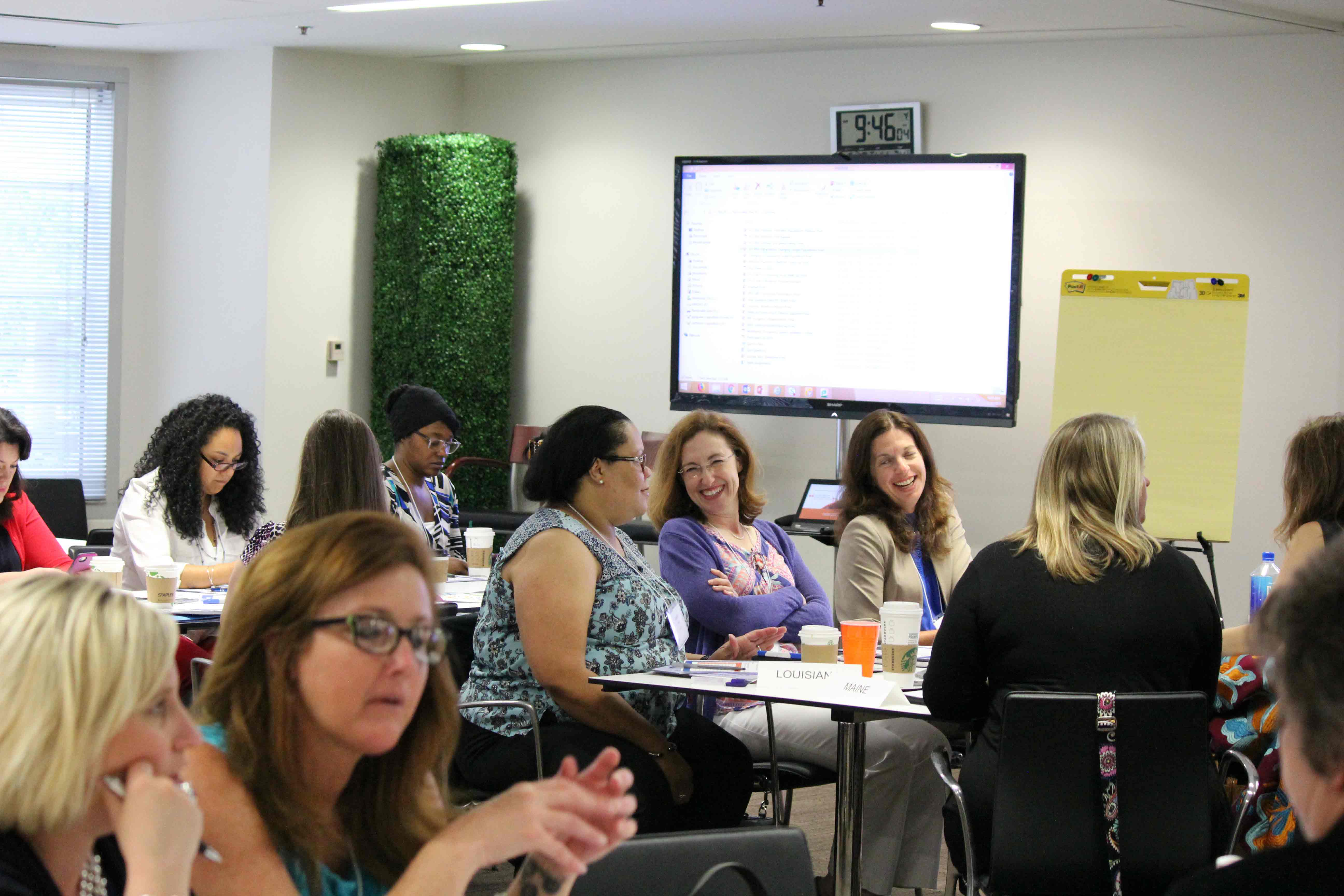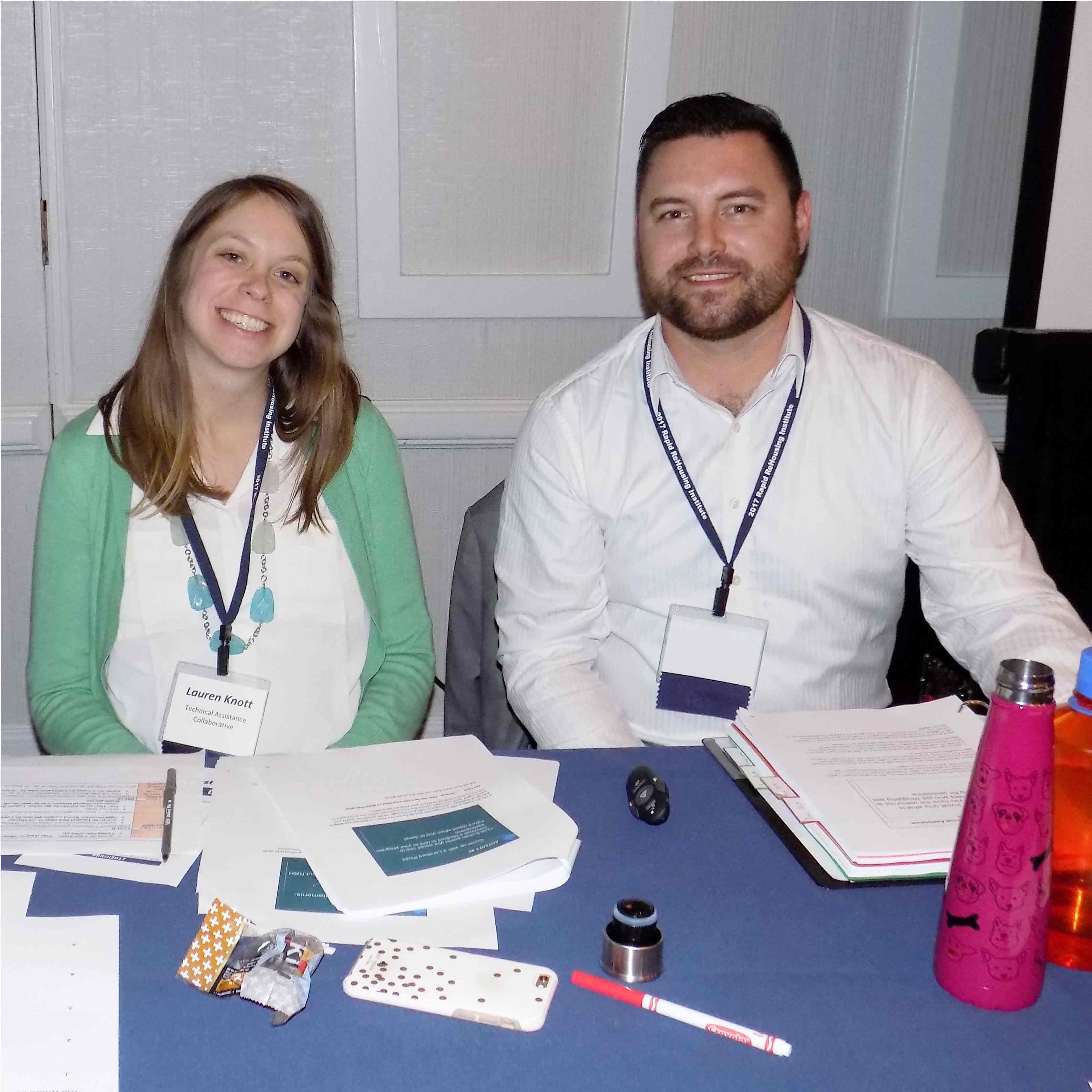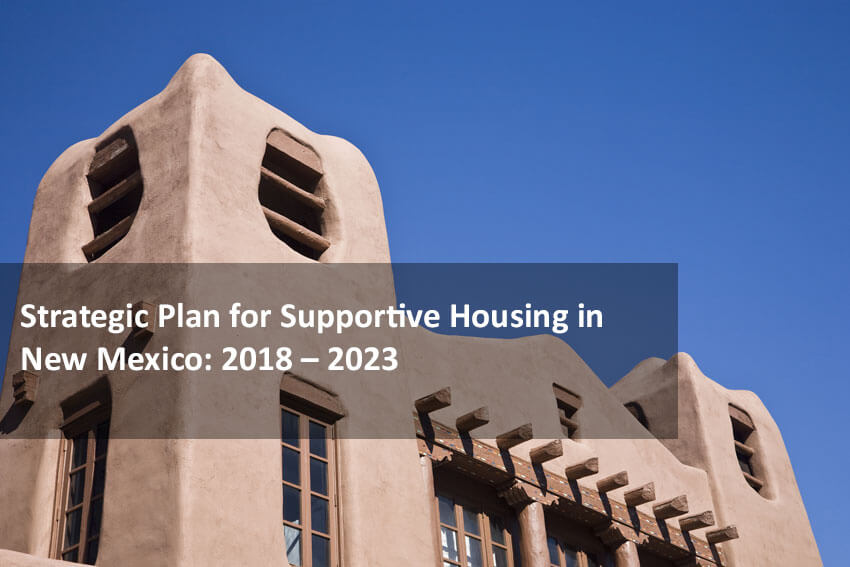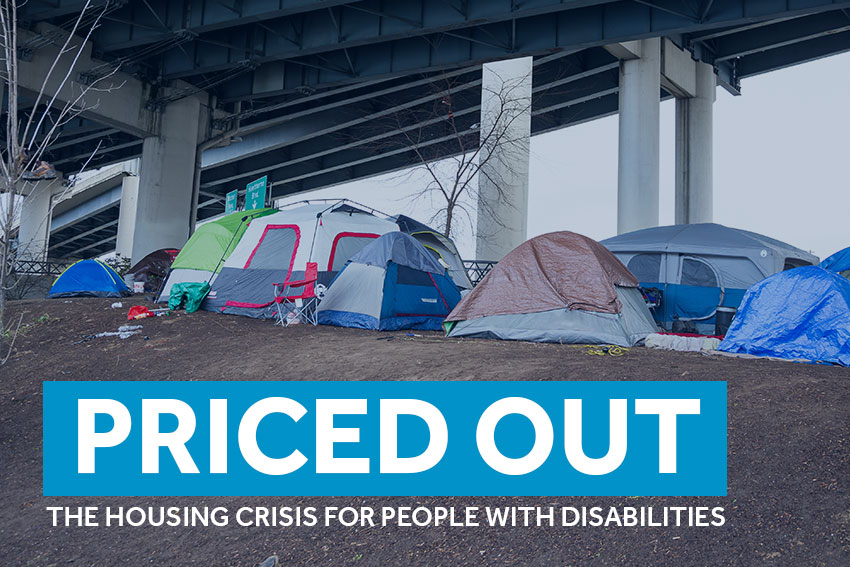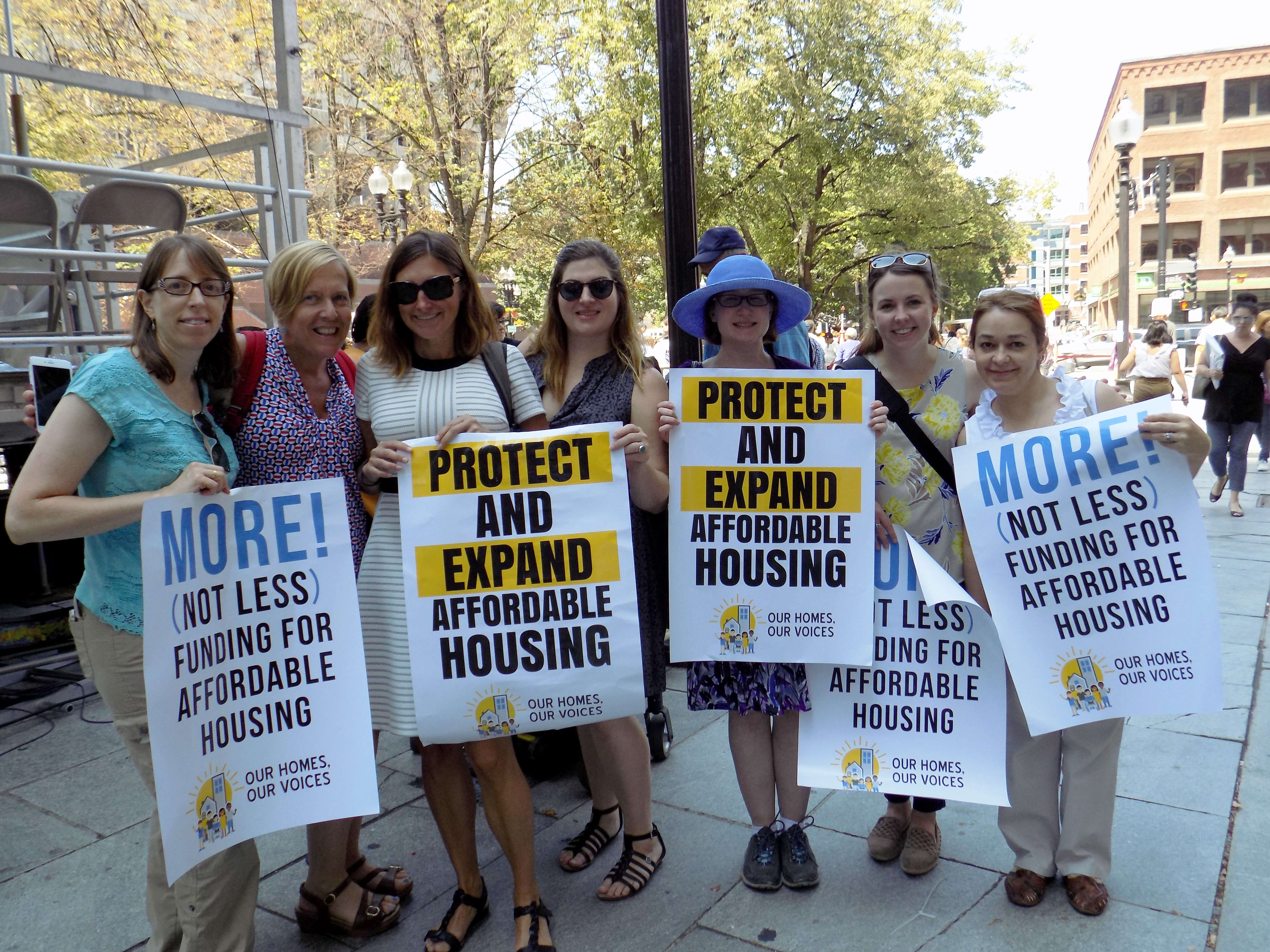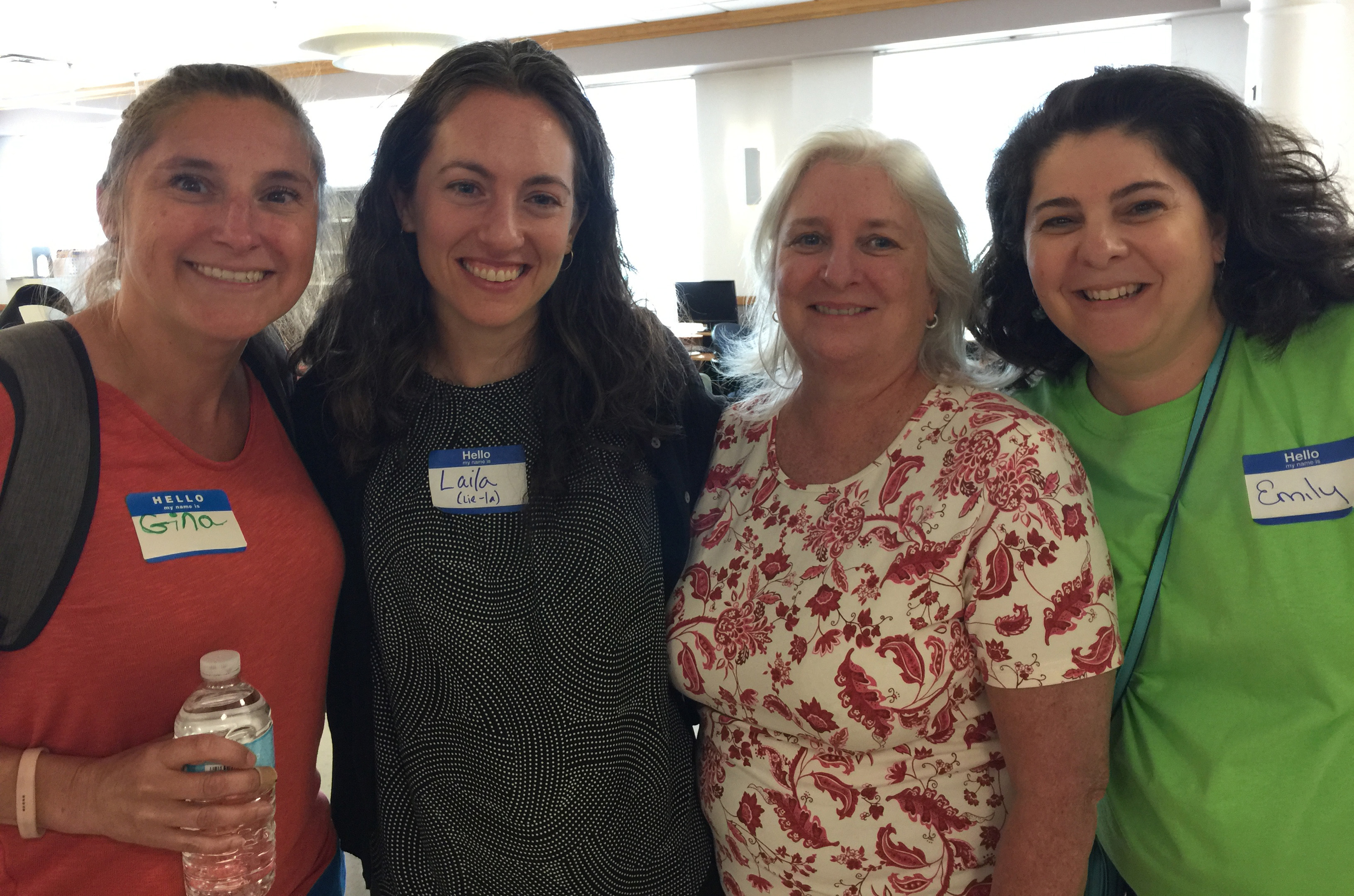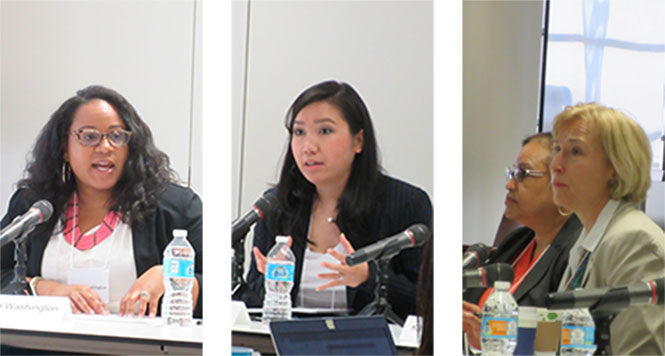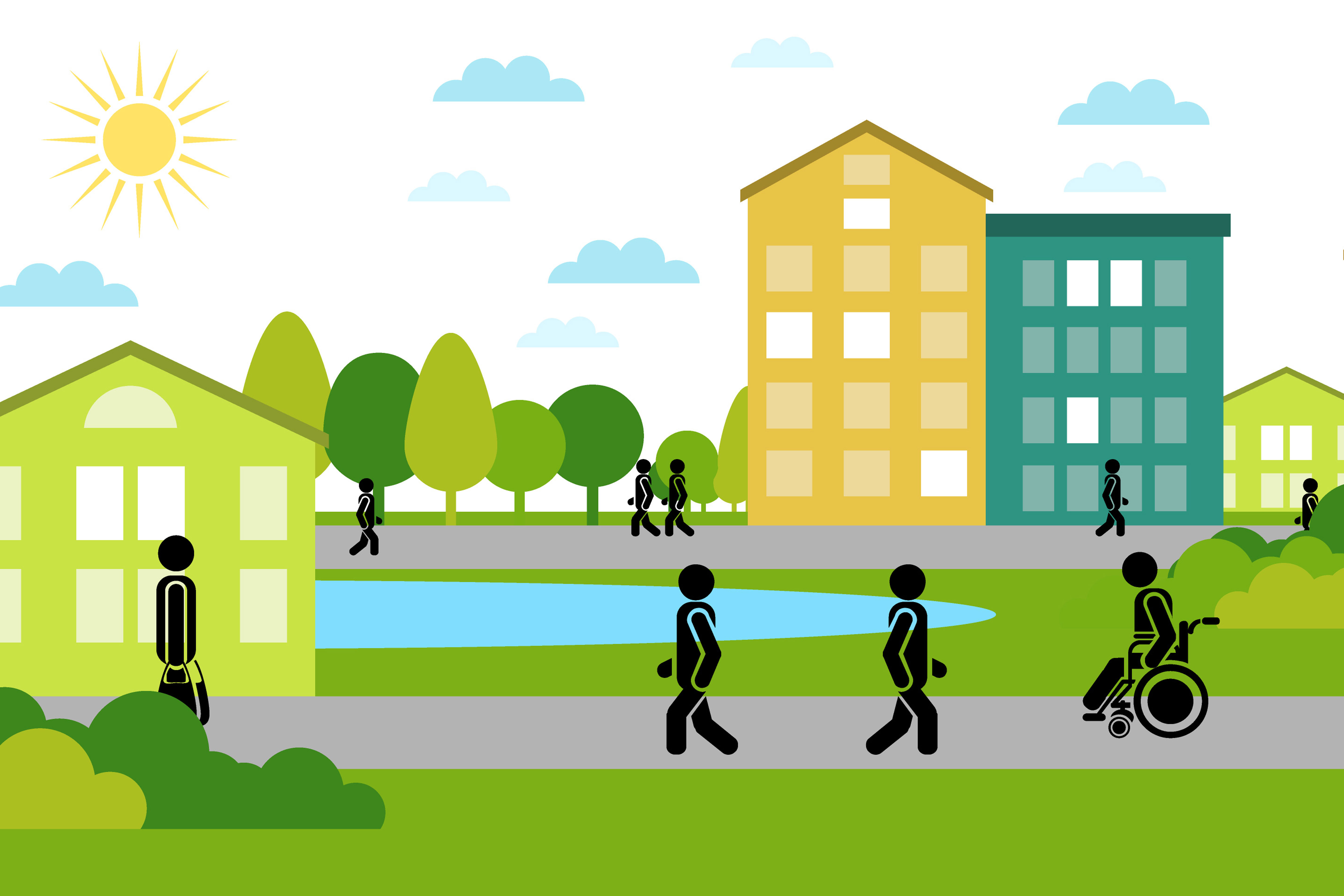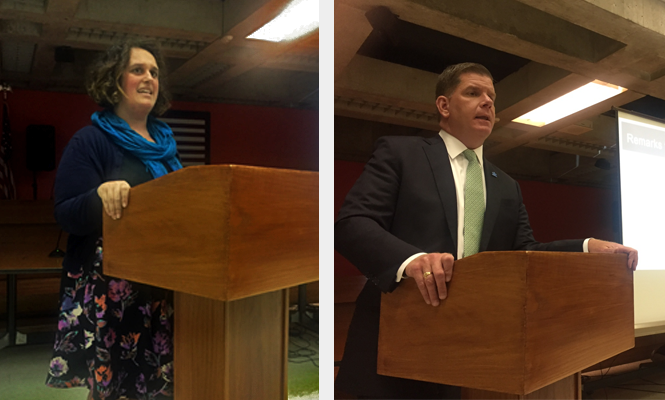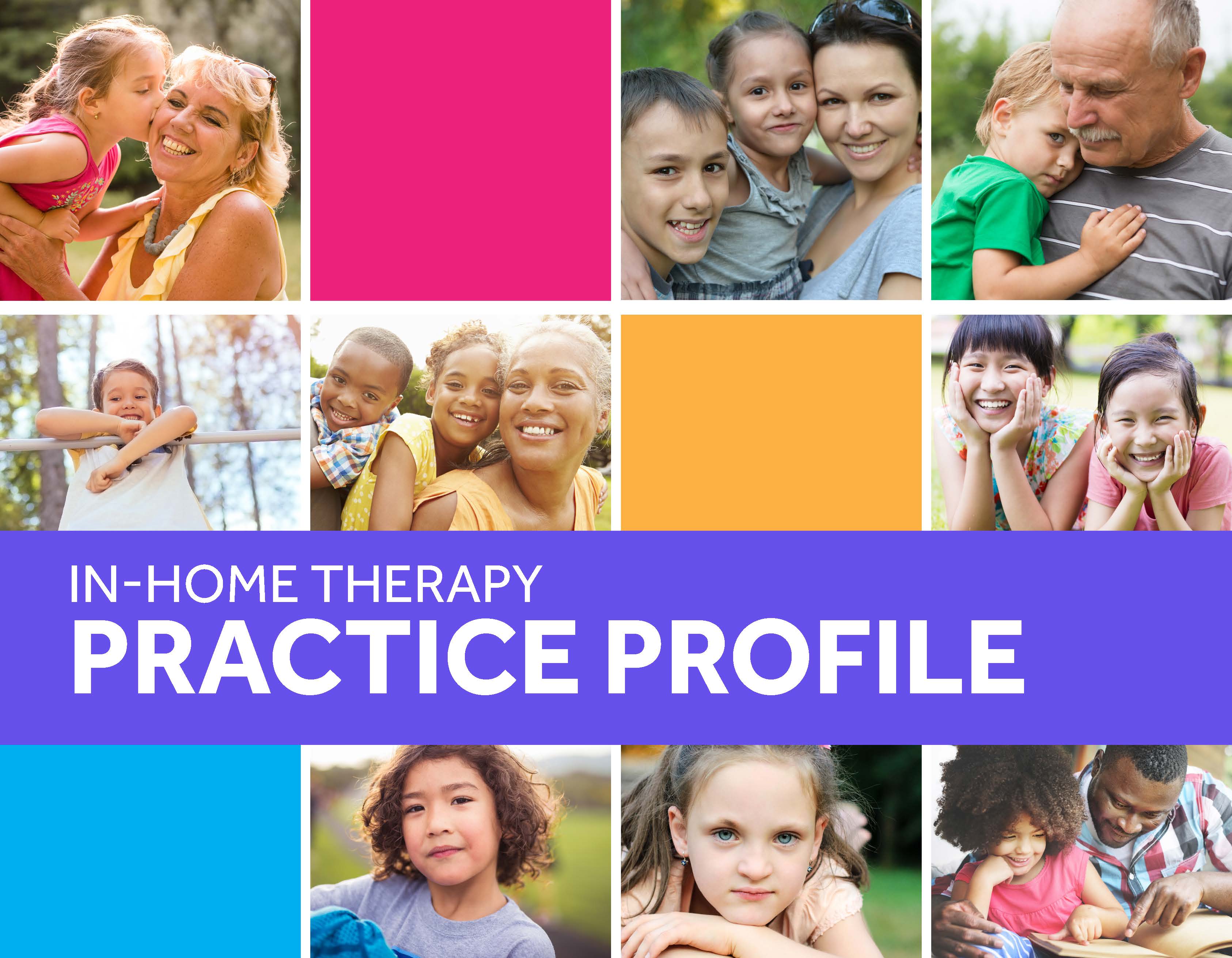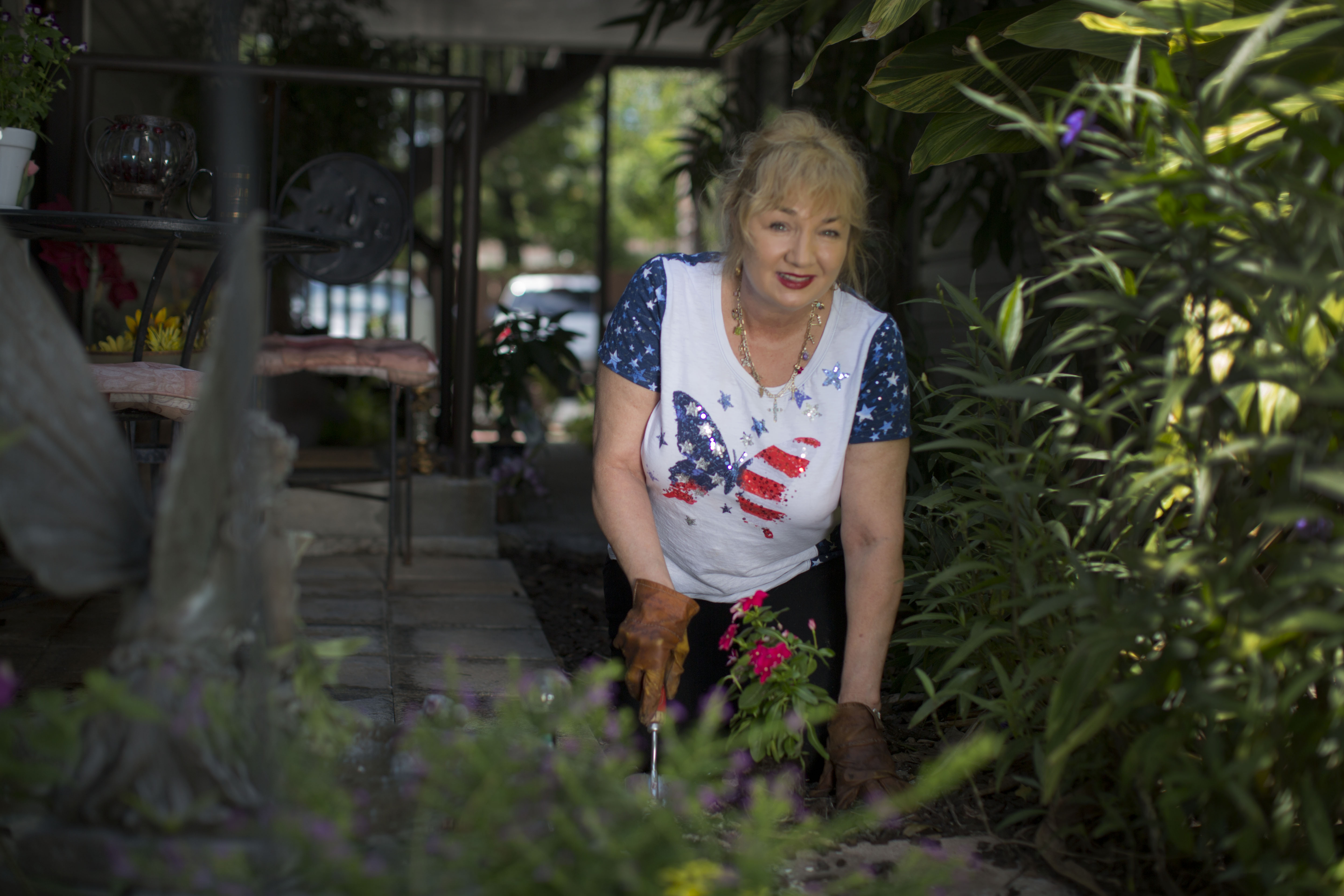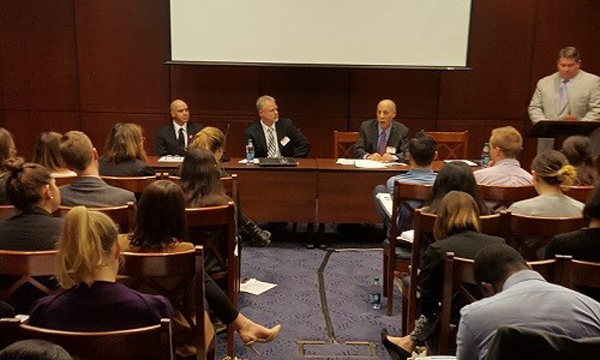Access: The TAC Blog
Four Key Principles to Help Manage the COVID-19 Response at the Systems Level
The United States is experiencing a crisis unlike anything we have experienced before. The challenges associated with COVID-19 have significantly affected the systems that help people living with disabilities or experiencing homelessness. Every system, every provider, and every person affected by this crisis has needs.
State government agencies are stretched, with many employees working remotely and much existing work on hold in order to focus on the crisis. State resources will become limited due to the shock to our economic system. Cities are implementing public health plans and managing “stay-at-home” orders. Direct service providers, such as mental health and homelessness agencies, have had to reduce capacity and access due to staff shortages and social distancing, while continuing to provide safety net services. Hospitals are bracing to be overwhelmed by the number of people who will need hospital-level treatment. Complicating the situation, our personal health and that of our family members, friends, and colleagues is at risk, and many people are experiencing stressors such as loss of income, shrinking retirement plans and investments, working from home, homeschooling our children, and social distancing and stay-at-home orders.
Direct service providers are on the front lines in helping people living with disabilities and experiencing homelessness to remain healthy and stable in their communities during a crisis. Unfortunately, they are not typically the focus of disaster mitigation, preparedness, or response and recovery activities, leaving them to manage the crisis on their own. This can result in inefficient use of resources, lack of coordination and communication, and poor outcomes for the individuals being served. Vulnerable populations should be a focus for all aspects of disaster mitigation, including the current public health crisis, at the local, state, and federal levels.
Throughout my career, I have learned the importance of relying on a set of core principles to successfully manage major challenges, including systems-level crises and disasters. Whether you are reading this from the perspective of a federal or state government agency, a local system, a philanthropy, or as a provider, these four principles can serve as a framework in your work to help our communities navigate the Coronavirus crisis:
- An effective management structure is necessary in order to first control, then resolve the crisis, and finally implement recovery. Scattershot, piecemeal approaches delay access to critical resources and may exacerbate the crisis before it gets better. Management structures such as the Incident Command System and the U.S. Department of Health and Human Services’ Medical Surge Capacity and Capability (MSCC) Management System provide scalable approaches that can be used at any level as an organized way to manage the crisis. Incident command systems, such as command centers currently managing the COVID-19 crisis in most states, must involve direct services and homelessness systems in disaster response.
- Strong leadership, including both executive leadership and team leaders, is essential to crisis management and disaster recovery. Effective leaders demonstrate compassion and empathy to those impacted while simultaneously effectively managing the crisis as it is occurring. Strong leadership relies on a management framework that is informed and carried out by skilled subject matter experts.
- Large-scale crises and disasters are resolved successfully through collaboration, coordination, and partnerships — especially those established prior to the crisis. The needs of people living with disabilities and those experiencing homelessness cross into multiple systems and therefore require a multi-system, multi-level response.
- We emerge from a crisis because we are resilient. I am always amazed by the resilience of individuals who experience adversity, disability, stigma, oppression, racism, and disaster. A “culture of resilience,” as described in Disaster Resilience: A National Imperative (National Resource Council, 2012) is what is needed to collectively mitigate, prepare for, respond to, and recover from large-scale disasters like the one we are confronting now, and the ones that lie ahead.
These principles held true when, as deputy commissioner at the New Jersey Department of Human Services, I was involved in responding to various crises and disasters while overseeing the state’s public mental health system, as well as emergency preparedness and response with other state and local agencies. Some of the situations in which the principles were an invaluable tool to me included statewide hurricane preparedness, planning and response to the H1N1 swine flu pandemic in 2009, and operation and staffing of a mass shelter on a military base for citizens being evacuated to the United States in the immediate aftermath of the 2010 Haiti earthquake. During a state government shutdown in 2006, I used my disaster-related experience to ensure that the public mental health system remained functional during a temporary halt in government functions. These principles were also relevant earlier in my career when I was on a mental health team that responded to disasters such as plane crashes and flooding — and when, as a wildland firefighter, I joined others in responding to fires that threatened life and property.
As we experience the COVID-19 crisis now, there is significant uncertainty that lies ahead for all of us, both professionally and personally. The four principles above can help us begin to push past a sense of hopelessness and helplessness. History shows that we will emerge from this. Every crisis is unique — but lessons learned from other situations can nevertheless give us a sense of optimism and control as we understand that this crisis, like every other, can be managed.
Learn about TAC's technical assistance services in disaster preparedness and recovery.
COVID-19 Resources for Housing and Service System Decision-Makers
On behalf of TAC, our thoughts go out to you as we all confront the challenges of navigating the coronavirus crisis in our personal and professional lives. This pandemic will impact the work we do for the foreseeable future, and access to information will be critical to managing our collective response. The immediate crisis has, in fact, inundated us on nearly a daily basis with a significant volume of important information from government agencies and professional and advocacy associations.
To help with the effort of keeping up, we have created a TAC COVID-19 Resource Page that consolidates current information on key, cross-cutting topics from the federal government and other sources related to Medicaid, behavioral health and disability services, and housing/homelessness. These resources, drawn from our consultants' extensive knowledge base and networks as well as the efforts of partner organizations, can assist state and local decision-makers and providers in responding to the evolving situation.
The TAC COVID-19 Resource Page will be updated regularly as new information becomes available. If you have questions about other topics, guidance, or federal/state/local actions that are not included, please inquire at info@tacinc.org and we will try to provide you an answer or refer you to a more appropriate source.
Learn about TAC's technical assistance services in disaster preparedness and recovery.
News, Resources, & Happenings at TAC: February 2020
Beyond Pizza — How Communities Handle Compensation and other Practical Issues with Young Adult Partners
Communities working to end youth homelessness are increasingly bringing youth and young adults with lived experience of homelessness to the forefront of their planning and implementation efforts, often with the support of a HUD Youth Homelessness Demonstration Program award. Of course, the young people who contribute their energy and insights should be compensated for their time - but how, and how much? TAC Senior Associate Lauren Knott, together with consultant Lauren Leonardis, surveyed a range of Youth Action Boards (YABs) to find out how they handle this and other challenges. The results are available as The Gab on YABs, a collection of community fact sheets and topic spotlights full of useful information for any community committed to fully incorporating youth and young adult leadership.
Tools for Successful State Partnerships between Medicaid and Housing Agencies
From 2016 to 2018, sixteen states participated in a Centers for Medicare and Medicaid Services (CMS) Innovation Accelerator Program (IAP) State Medicaid-Housing Agency Partnerships track. The tools developed and used to provide technical assistance to these states, incorporating the work and expertise of many TAC colleagues, form the basis of a new State Medicaid-Housing Agency Partnerships Toolkit published recently to the LTSS website. The toolkit is designed to assist states as they consider systems-level changes that further community integration, including the intersection between health care and housing. It is available for states to download, use, and adapt.
Trainings for Trainers in a Unique Rapid Resolution Pilot Program for Veterans
TAC has recently hosted several three-day events focused on homelessness diversion and rapid exit strategies for Veterans. These "train the trainers" sessions, conducted in partnership with the Cleveland Mediation Center and Abt Associates, are part of our support for the Department of Veterans Affairs' Supportive Services for Veteran Families (SSVF) program. Over the past two years, TAC and our partners have provided a wide range of onsite, remote, and training technical assistance in the development and rollout of SSVF's "Rapid Resolution" initiative, the first nationwide federal effort of its kind - a pilot program that supports diversion strategies for Veterans who are entering homelessness or have only recently become homeless. The recent trainings teach critical diversion and rapid exit skills in the context of SSVF's program design and implementation, with an emphasis on giving practitioners the tools they need to transfer that knowledge to their home communities. The training effort is led by TAC Senior Associate Douglas Tetrault, with strong support from other TAC staff members and TAC partners, and project direction from TAC Senior Consultant Jim Yates.
STAFF ACTIVITIES
TAC staff members Jenna Espinosa, Ellen Fitzpatrick, Ayana Gonzalez, Lauren Knott, & Ashley Mann-McLellan have been facilitating convenings and providing TA for Youth Homelessness Demonstration Program communities in Iowa, New York, Massachusetts, and Maine; Associate Ellen Fitzpatrick and Senior Associate Ashley Mann-McLellan conducted a 3-part training for Boston agency directors to strengthen the role of housing navigators in their organizations, and is helping the Boston Public Health Commission with a strategic plan to make its 800-bed shelter more housing-focused; Ashley was also one of 350 volunteers in Boston's 40th annual homeless census - thanks, Ashley! Senior Associate Melany Mondello led a training for the Vermont Balance of State Continuum of Care on the definition and documentation standards of chronic homelessness; Senior Consultant John O'Brien spoke about the future of policy and payment at a Substance Use Disorder Action Forum hosted by the Medicaid Transformation Project; Senior Associate Rachel Post facilitated the first cohort of Housing and Healthy Communities Learning Network, with plans for a second round in the works; Senior Associate Tyler Sadwith launched a provider-to-provider pilot program to test an approach for delivering TA on medication-assisted treatment to California's Tribal health programs; and Tyler also joined Senior Consultant John O'Brien to share strategic planning advice at a roundtable for Pew Charitable Trust's Substance Use Prevention and Treatment initiative.
STAFF TRANSITIONS
TAC is growing! A warm welcome to Project Support Specialists Laura Harris and Ari Rogers; Communications Designer Jeff Nguyen; Associates Eric Gammons and Jenna Espinosa in our housing group; and Dayana Simons and David de Voursney, two new Senior Consultants in our human services group. Learn more about our new colleagues on the TAC staff page.
January 2020: Health and Housing - A Peer-to-Peer Learning Opportunity for Health Care Leaders
HOSPITAL AND HEALTH SYSTEM LEADERS are demonstrating a growing recognition of the powerful ways health outcomes are improved by access to safe and affordable housing. By forming innovative partnerships and programs to address the housing and supportive service needs of vulnerable populations, health care entities have the opportunity not only to improve individuals’ well-being but to reduce costs and strengthen communities as well.
In recognition of this promising trend, TAC — with the support of the Melville Charitable Trust — engaged mission-driven hospitals in a peer-to-peer Housing and Healthy Communities Learning Network that brought the knowledge of subject matter experts to participating hospital leaders. Our goal was to help participating hospitals, which ranged from a large urban institution serving over 180,000 unique patients annually to several that serve smaller rural areas, to explore innovative partnerships in their own communities. With such initiatives, anchor institutions can increase access to affordable housing and the supportive services required to improve health and sustain tenancy for vulnerable patient populations, while also supporting the communities in which they reside.
From June to December of 2019, Learning Network sessions focused on topics such as leveraging hospital resources for housing partnerships, building multi-hospital and cross-system collaborations with the housing sector, identifying priority populations, and evaluating short- and long-term outcomes. Reflecting on the experience, participants appreciated the depth of content covered, and valuable opportunities to connect with other participating hospitals, stakeholders, and subject matter experts. They highlighted these insights:
Collaboration takes work — but it’s worth it.
Participants gained a deeper understanding of the varied considerations and steps required to partner with housing finance agencies, housing developers, and service providers. Participating hospitals reported feeling more equipped and confident to engage such potential partners in conversations now that they are more familiar with the practices, terminology, and vernacular of these systems.
The right data is key.
Participants gained clarity on which sources of data can be used to identify priority patient populations for housing and health care initiatives, and on the metrics that can be monitored to measure a new program’s performance.
Systems of all sizes have a role.
Housing and health care collaborative partnerships can range in size from multi-million dollar efforts, which are most frequently cited in this growing field, to much smaller initiatives (i.e. $100,000 and under). Participants from smaller hospital systems in rural areas noted that this realization gave them hope that they could have an impact and make a significant contribution to their community’s needs.
Potential partners abound.
Participants gained an understanding and appreciation for the diverse key stakeholders that can contribute to an initiative’s design, funding, and promotion. Participating hospitals learned how engaging HUD homeless Continuums of Care, public housing agencies, community health clinics, behavioral health providers, philanthropic organizations, elected officials, and others can help generate community and public support for these kinds of initiatives and set them up for long-term sustainability.
Cutting-edge innovators have knowledge to share.
Charles Richman, Executive Director of the New Jersey Housing and Mortgage Finance Agency, described his agency’s initiative, which incentivized hospitals to develop multifamily housing with set-aside units for frequent utilizers of hospital emergency departments. Barbara DiPietro, Senior Director of Policy at the National Health Care for the Homeless Council, reviewed for participants the extensive list of recent studies documenting the efficacy of combining housing, health care, and supportive services for those who are frequent utilizers of emergency service systems. Participants also appreciated a range of publications and case studies accompanying each of the topical sessions, and reported that they have used this literature to engage executive leadership in discussions about launching their own housing and health initiatives.
UPDATE
TAC is excited to announce a second round of the Housing and Healthy Communities Learning Network, to be offered in six monthly virtual learning sessions from May to October of this year. This round of the Learning Network will be focused regionally, and is open to hospitals in Delaware, Kentucky, Maryland, North Carolina, Virginia, West Virginia, and the District of Columbia.
For more information and directions for a simple application process, visit bit.ly/Housing-Learning-Network or email TAC Senior Associate Rachel Post. *** Please note that due to the Coronavirus crisis, the timing of this opportunity may be adjusted. Please be in touch about your interest and needs.
The Gab on YABs: Youth Action Boards Report on How They Are Partnering with Communities to End Youth Homelessness
WHAT HAPPENS WHEN YOUNG PEOPLE who have directly experienced the challenges of homelessness or unsafe/unstable housing bring their expertise, passion, and creativity to the goal of transforming systems and ending youth homelessness?
- They bring reality-based understanding to existing homelessness efforts about the unique needs of youth in a given community.
- They model a core commitment to inclusion and equity that can be a struggle for older adults and more traditional systems of decision-making.
- They form an accepting, empowering community that strengthens the youth who participate.
- All this and more!
Across the U.S., rural, suburban, and urban communities that have made a commitment to end homelessness are learning how to understand and address the specific needs of youth and young adults. Just as with other populations in need of services and resources, the insights of those most directly affected — in this case, young people with lived experience of homelessness — are essential to finding solutions. This is why one of the key first steps is for a community to form a Youth Action Board that brings youth and young adults to the forefront of planning and implementation efforts.
Over the past few years, TAC has worked closely with many communities on their plans to end youth homelessness. At the center of each engagement has been the YAB, a decision-making entity made up of youth and young adults who have experienced or are experiencing homelessness. YABs provide leadership and guidance in partnership with other key stakeholders in the process of developing and implementing a plan to end to youth homelessness in the communities where they operate.
Every community is different, but there has been a great deal of interest in “what works” for others, and communities often have questions about best practices nationally for YABs. TAC has encountered YABs at all different stages — some well-established, some that have met formally for a short time, and others that have two or three core members identified, but haven’t yet taken the next step. So TAC decided to gather a sampling of YAB expertise as a guide for communities at all stages of YAB development.
Working with Lauren Leonardis, an independent consultant specializing in youth homelessness issues and a founding director of the large and active Boston YAB, we surveyed seven YABs, seeking to capture a snapshot of each one. The communities were asked about the big picture — their strengths and challenges — as well as the small details that push them forward like facilitation practices, budget, and recruitment efforts.
The results are fascinating and inspiring as they show diverse strategies, challenges, and opportunities in each unique community at the specific moment when the survey was answered. To share them, TAC has created The Gab on YABs: a series of fact sheets with an overview of each community, to be followed soon by a “topic spotlight” series looking at patterns and trends in areas of interest like compensation, structure, recruitment, and more.
We hope these resources will answer some of the questions communities have about how other YABs are making it work. No matter what stage your community has reached, The Gab on YABs can help you bring the voices and power of youth and young adults with lived experience of homelessness directly into all planning and implementation decisions.
News, Resources, & Happenings at TAC: October 2019
An International Gathering to Strengthen Behavioral Health Leadership
Kevin Martone, TAC's Executive Director, recently joined colleagues from eight other countries for a Knowledge Exchange on Mental Health Policy, one of three tracks in the International Initiative for Mental Health Leadership Exchange in Washington, DC. Peer to peer, participants shared perspectives, questions, and solutions on common challenges in their very different countries - such as coordinating effective collaborative advocacy, making mental health parity a reality, and exploring the potential of telehealth. In addition to his presentation "That Was (Not) Easy!: Implementing Science to Policy," Kevin also participated in an invitation-only group focused specifically on rural mental health issues in different countries.
Housing and Healthy Communities: A Learning Network
Safe, decent, affordable housing is known to be a significant "social determinant of health" that can contribute to improved management of physical and behavioral health conditions. Affordable housing with supportive services is recognized for its potential to reduce emergency department visits and hospital admissions, as well as shortening average length of stay in inpatient settings. In growing recognition of these facts, hospitals and health systems across the country are considering their role in improving access to affordable housing in the communities that surround their facilities.
TAC has convened a peer-to-peer learning network of hospital systems from across the country to facilitate this important exploration. Subject matter experts and participants share knowledge and ideas in monthly calls focused on topics such as leveraging hospital resources, building multi-hospital partnerships and community collaboratives, identifying priority populations, setting performance measurements, evaluating short- and long-term outcomes, sustaining partnerships, and designing communication strategies to convey community impact.
TAC is proud to bring nationally recognized innovators to this monthly series to address the needs of both urban and rural hospitals as they design community-specific plans that meet the needs of priority patient populations. To learn more about this project, be on the lookout for a December post on Access: The TAC Blog. Should your hospital system be interested in joining a future learning network to explore or facilitate planning for housing partnerships, email TAC Senior Associate Rachel Post.
STAFF ACTIVITIES
TAC Associate Jennifer Ingle conducted a series of trainings with the Cambridge (MA) Multi-Service Center on the Principles of Housing First, Motivational Interviewing, Co-Occurring Disorders & Trauma, and De-escalation Techniques; Senior Associate Lauren Knott led off a panel discussion on "Innovations in Youth Collaboration: Best Practices in Creating and Engaging a Youth Action Board" at this year's Point Source Youth symposium; Senior Associate Nicole LiBaire was interviewed about post-disaster community resilience for the article "Dedicated to Recovery" in the Chico News & Review; Executive Director Kevin Martone co-authored, with Human Services Director Francine Arienti and Senior Consultant Sherry Lerch, Olmstead at 20: Using the Vision of Olmstead to Decriminalize Mental Illness; Senior Consultant Lisa Sloane facilitated the panel "Mainstream Vouchers: Overcoming Obstacles" at the 2019 NAHRO Summer Conference; together with two additional co-authors, Senior Consultant John O'Brien and Senior Associate Tyler Sadwith published "Leveraging Medicaid to Combat the Opioid Epidemic: How Leader States and Health Plans Deliver Evidence-Based Treatment" on the Health Affairs blog; Senior Associate Rachel Post presented in a SAMHSA webinar on "Housing First and Permanent Supportive Housing: Funding and Policy Considerations," and on "Using Peer Providers in Supportive Housing Programs"at the Washington State Peer Pathways Conference; and an article by TAC consultant Naomi Sweitzer, "Building Relationships between HUD Multifamily Property Owners & CoCs," was published by the United States Interagency Council on Homelessness.
STAFF TRANSITIONS
Congratulations to Lauren Knott, Ashley Mann-McLellan, and Douglas Tetrault, who have all advanced to become TAC Senior Associates. And a round of applause to Senior Associate Melany Mondello, who has completed her M.B.A.!
September 2019: Olmstead at 20 — Using the Vision of Olmstead to Decriminalize Mental Illness
June 22, 2019 marked the twentieth anniversary of the United States Supreme Court’s Olmstead v. L.C. decision. The case was filed on behalf of two women with developmental disabilities and mental illness who were confined in a state psychiatric hospital in Georgia despite their treatment professionals’ recommendations that they could live in the community. In its decision, the court stated that unjustified segregation of persons with disabilities constitutes discrimination in violation of Title II of the Americans with Disabilities Act (ADA). The ADA established a mandate to public entities to ensure that people with disabilities live in the least restrictive, most integrated settings possible.
Because of the Olmstead decision 20 years ago, many states have implemented policies, programs, and new housing options to serve people in the most integrated settings appropriate to their needs. Olmstead-based lawsuits and settlement agreements in several states have forced new resources and opportunities for community integration into both state and local systems. While such progress has been slow, an increase in attention to individuals with mental illness and other disabilities who are unnecessarily segregated — or at risk of becoming so — in settings such as psychiatric hospitals, nursing homes, and large board and care facilities has resulted in many more people with mental illness living in integrated, community-based settings.
Yet for far too many people with mental illness who end up unnecessarily in another type of segregated setting — jails and prisons — the promise of the ADA and the Olmstead decision remains unfulfilled. The incarceration of people with mental illness in communities throughout the United States is a form of discrimination that our public entities must address.
In March 2019, TAC convened top thinkers from across the U.S. to examine the criminalization of persons with mental illness, and to initiate the use of Olmstead as a framework for reform. Based on insights from that group, TAC has prepared and published Olmstead at 20: Expanding the Vision of Olmstead to Decriminalize Mental Illness. In this brief, we apply key elements of Olmstead law to the challenge of reducing the disproportionate number of people with mental illness in the criminal justice system.
Segregated Settings and the Integration Mandate
Understanding how Olmstead applies to the correctional system begins with recognizing that jails and prisons are institutions and that the U.S. Department of Justice’s definition of “segregated settings” applies to them. The “integration mandate” is a fundamental aspect of the ADA, requiring public entities to “administer services, programs, and activities in the most integrated setting appropriate to the needs of qualified individuals with disabilities.” For most individuals, receiving services in the community is the most integrated setting, and an absence of such services, leading to institutionalization, reflects a violation of the ADA. Many individuals with mental illness in correctional settings are there because community-based services and settings were not available to meet their needs — even as public funding is used to sustain the costs of housing people in the segregated correctional system.
Community-Based Services Play a Vital Role
Underdeveloped service delivery systems, budget cuts, loss of insurance coverage, and tightened program eligibility requirements not only reduce people’s access to community services, but also make it harder for them to pay for medication, treatment, and housing. When people with mental illness lack access to comprehensive, community-based treatment and support services, they are at greater risk of ending up in institutional, segregated settings, including correctional facilities.
In service systems across the country, encounters between people with mental illness and law enforcement can be traced to a lack of community-based treatment and services. If there is no hotline, mobile crisis team, or mental health respite program, the only option for a person in crisis or their family may be to call the police — whose only option may be to arrest the person.
Taking the Next Steps
If you represent a public entity at any level, we encourage you to launch initiatives that minimize preventable interactions with the criminal justice system. Furthermore, such measures should be fully incorporated into the Olmstead planning efforts of your state or county to meet their legal obligations. We hope that other interested stakeholders, such as advocates and civil rights groups, will also find this framework of use for Olmstead planning and advocacy efforts.
News, Resources, & Happenings at TAC: June 2019
Challenges and Solutions in Rural Mental Health
Q: What are the most important steps to improve mental health in the rural United States? A: Access to care, insurance coverage, and strong social determinants - like affordable housing - that can reduce need. In recognition of Mental Health Month, TAC Executive Director Kevin Martone discussed these topics recently with Beth O'Connor, director of the Virginia Rural Health Association, on her Rural Health Voice podcast (episode #16).
Expanding Access to Substance Use Disorder Treatment through Medicaid
The TAC Human Services team is engaged in efforts to support states in addressing substance use disorder (SUD) needs through their Medicaid programs.
In April, with support from Arnold Ventures, TAC published a brief on State Approaches to Developing the Residential Treatment Continuum for Substance Use Disorders. This resource offers valuable peer insights to help state Medicaid agencies in their efforts to incorporate residential SUD treatment providers into Medicaid provider networks. TAC Senior Consultant John O'Brien, Senior Associate Tyler Sadwith, and co-authors focus on five states that have been early leaders in modernizing their SUD treatment systems: California, Maryland, Massachusetts, Michigan, and Virginia. Drawing on interviews with leaders in these states, the brief identifies key decision points that other states are likely to encounter as they too expand coverage for residential SUD treatment services. Strategic recommendations based on the experiences of these five leading states are offered; best practices highlighted; and factors identified that states should consider when implementing section 1115 SUD demonstration projects and other SUD program reforms.
TAC followed up publication with a webinar to present the major findings in the brief, focusing especially on key decision points and recommendations for state Medicaid agencies. Medicaid leaders from Maryland and Virginia were featured presenters, explaining critical steps they have taken to engage their SUD residential provider communities and provide access to evidence-based practices such as medication-assisted treatment.
In early and mid-May, with support from Arnold Ventures, TAC kicked off engagements with Ohio, Louisiana, and West Virginia. TAC's technical assistance will help these states in their efforts to improve access to high-quality medication-assisted treatment for opioid use disorder through targeted transformation initiatives. TAC consultants and partners met with key officials from Medicaid, substance abuse agencies, and managed care organizations - as well as patient advocates and pharmacy stakeholders - to discuss priority focus areas and options in the design, development, and implementation of interventions.
TAC Staff in Action
Staff Activities
TAC Associate Ashley Mann-McLellan presented on "Homelessness Solutions: Housing-Focused Outreach" at the Louisiana Housing Conference in Baton Rouge; TAC consultant Naomi Sweitzer attended the spring conference of the Southwestern Affordable Housing Management Association, where she co-presented with with HUD, Austin (TX) ECHO, and Prak Property Management on the Multifamily Homeless Preference.
May 2019: Delivering Patient-Centered Care in the Context of Twelve-Step Programming
There are fundamental reasons that patients with opioid use disorder (OUD) should be offered access to medications approved to treat their condition. For one, the evidence base is compelling: Medication-assisted treatment (MAT) improves patients’ quality of life; reduces substance misuse; and lowers emergency department and hospitalization costs, hepatitis B and HIV rates, and overdose death rates. National organizations dedicated to health care quality have endorsed quality measures assessing the use of pharmacotherapy for OUD, and propose adding them to widely used performance measurement sets. The U.S. Department of Justice has signaled that refusing to permit access to MAT and discriminating against persons receiving MAT are violations of the Americans with Disabilities Act. For policymakers and providers seeking to promote patient-centered care, information about medications available to treat a condition should be shared freely and objectively so that patients and their family members can make informed decisions based on the best scientific information available.
Opportunities for Alignment
Medication-assisted treatment and other practice approaches that embody the principles of patient-centered care are considered by many to be incompatible with abstinence-based addiction treatment models rooted in 12-step programs. The tension that sometimes forms between providers who include medication in the treatment of OUD and those who do not threatens to jeopardize recent investments in prevention, treatment, and recovery, and to fracture a community of stakeholders who need to work together. It is important that addiction care stakeholders recognize and build on the overlap between treatment approaches that involve MAT and harm reduction considerations, and interventions based on 12-step programs. Too often these models are presented as “either/or.” In this post, we’d like to highlight the opportunities for “both.”
Considerable progress has been made in recent years towards improving the availability of medications and services used to manage OUD. Commercial payers, sometimes in collaboration with state leadership, are trending towards removing prior authorization requirements for buprenorphine. At least 51 Medicaid programs have assigned preferred status to buprenorphine, and lifetime treatment limits have all but disappeared. Training resources abound, offering vital supports to primary care clinicians adopting MAT as a new therapy and OUD as a new condition to treat. Support has burgeoned for harm reduction approaches such as syringe service programs, safe injection facilities, and naloxone distribution initiatives, saving lives through overdose reversals and reduced incidence of viral and bacterial infections.
And yet, only 27 percent of specialty addiction treatment centers offer MAT. This unfortunate discrepancy is the result of many factors, including a shortage of medical practitioners who have received a waiver from SAMHSA to prescribe buprenorphine for opioid dependence treatment; obstacles to billing for sufficient reimbursement; and, often, a philosophical orientation informed by a particular interpretation of 12-step programs. Proponents of MAT and harm reduction modalities supporting patient-centered care often face opposition from some segments of the 12-step recovery community. Understanding the positions of 12-step organizations on the role of MAT and harm reduction is a key step to crossing this quality chasm.
A Closer Look at 12-Step Literature
The official literature of Alcoholics Anonymous (i.e., approved by the AA General Service Conference) shows significant alignment with harm reduction and MAT approaches. One AA pamphlet, The AA Member—Medications and Other Drugs, leads with the suggestion that “No AA member should ‘play doctor’; all medical advice and treatment should come from a qualified physician.” The pamphlet continues, “Because of the difficulties that many alcoholics have with drugs, some members have taken the position that no one in A.A. should take any medication. While this position has undoubtedly prevented relapses for some, it has meant disaster for others… they feel guilty because they are convinced that ‘A.A. is against pills.’”
The foundational text Alcoholics Anonymous explicitly supports the use of medications for withdrawal management, as in the chapter Working With Others: “Sometimes you will have to call a doctor and administer sedatives under his direction.” Further, the book notes the important role of clinicians, explaining in the chapter The Family Afterward that “We are convinced that a spiritual mode of living is a most powerful health restorative… But this does not mean that we disregard human health measures. God has abundantly supplied this world with fine doctors, psychologists, and practitioners of various kinds. Do not hesitate to take your health problems to such persons. Try to remember that though God has wrought miracles among us, we should never belittle a good doctor or psychiatrist. Their services are often indispensable in treating a newcomer and in following his case afterward.”
The traditions of AA mirror central tenets of harm reduction. For example, Tradition 3 is: “The only requirement for AA membership is a desire to stop drinking.” AA members recognize that relapse can be part of recovery, and encourage even chronic relapsers to “keep coming back.” Indeed, many people begin attending meetings while still actively drinking alcohol or using substances. The fellowship’s response is to welcome these individuals with open arms. The refrain “We are glad you are here, especially the newcomer” is commonly used in preambles at the beginning of meetings. The underlying premise of Tradition 3 — in text and in practice — is meeting people where they are in their recovery, which is consistent with the core principles of harm reduction.
Nationwide, a patient-centered orientation of care within a framework of harm reduction is beginning to emerge in clinical practice. Guided with evidence amassed over the past few years, clinicians are revisiting restrictive protocols originally issued for buprenorphine care. Recent literature in an influential academic journal offers new clinical recommendations with respect to the incidence of relapse, patients’ use of other substances and benzodiazepines, and the expected duration of treatment. These evolving approaches both embody the model of harm reduction and are consistent with AA’s Tradition 3.
Another major 12-step organization, Narcotics Anonymous (NA), issued a pamphlet titled “Narcotics Anonymous and Persons Receiving Medication-Assisted Treatment” that notes, “Narcotics Anonymous does not express opinions — either pro or con — on civil, social, medical (including medically assisted treatment), legal, or religious issues.” Echoing AA, NA’s Tradition 3 states that the only requirement for membership is a desire to stop using. NA delegates to individual groups the question of whether members receiving MAT should be allowed to share their experience during meetings: “Each group is free to make its own decision on recovery meeting participation and involvement in group services for those receiving medication assistance for drug addiction.” The pamphlet encourages members receiving medications to find different meetings if they encounter strong opinions about MAT from other members.
Building Common Ground
There are promising examples in the addiction treatment community of providers beginning to weave MAT and harm reduction principles together with 12-step-based models. The Hazelden Betty Ford Foundation developed a clinical protocol and training materials to intentionally integrate MAT with 12-step concepts and therapies. Social Model Recovery Systems has served as a ‘provider champion,’ educating other 12-step-based providers that MAT is — as the organization’s medical director Donald Kurth asserts — “well worth including in our armamentarium.” Such initiatives can play an instrumental role in state, payer, and stakeholder efforts to promote dialogue about MAT and harm reduction.
Nationwide, treatment providers are revising discharge policies to better achieve the patient-centered goal of keeping patients engaged in care despite lapses in complete abstinence or in strict adherence to program rules. Too often, patients are administratively discharged — kicked out of treatment — for continued use of alcohol or substances, i.e., their presenting symptom. Encouragingly, providers are trending towards harm reduction in this respect. Administrative discharges have recently declined by half, from 16 percent of all discharges in 2002 to 7 percent of all discharges in 2010.
There are opportunities for policymakers as well. Regulators, accreditors, and payers managing provider networks may benefit from understanding the inclusive positions of 12-step organizations in their efforts to incorporate MAT and harm reduction models into policy requirements. Those seeking to mitigate ambivalence toward MAT and harm reduction must have a grasp of 12-step literature sufficient to address the concerns emanating from the recovery community. Yet to suggest that pharmacotherapy should replace the value offered by 12-step-based providers is a blind spot. There are historical reasons why 12-step-based providers staffed by individuals with lived experience are so common, including stigma and longstanding financial neglect of addiction research and services. The focus of the 12-step framework on addressing the spiritual dimensions of recovery can be a valuable part of OUD disease management; The American Society of Addiction Medicine acknowledges the spiritual manifestations of addiction in both its definition of addiction and its clinical assessment criteria. Rather than discount the abstinence-based provider network, stakeholders should seek opportunities to support 12-step-based providers and staff in integrating medication-based therapies and patient-centered harm reduction principles into their treatment paradigm.
Much of this work is unfolding. California, Massachusetts, and other states have issued guidance clarifying that residential providers are expected to admit patients treated by clinicians with MAT. Missouri requires all SUD treatment providers to offer or arrange for all forms of MAT. Virginia requires residential treatment organizations to demonstrate access to MAT through specified methods, and has issued policy guidance to establish harm reduction principles within its buprenorphine provider network. State Medicaid agencies implementing section 1115 SUD demonstrations must ensure that residential treatment facilities either offer MAT on-site to residents or facilitate off-site access, and are revising licensure, certification, policy, and contracting to promulgate and operationalize these new requirements.
In general, states are setting expectations and developing policies to promote access to MAT to better align with the established scientific consensus, the interest of national quality measurement organizations, recognition of potential legal liabilities, and, perhaps above all, the goal of providing patient-centered care to individuals who want to reclaim their lives. These objectives are achievable within the context of a 12-step framework for recovery, which is a prominent and longstanding feature of the specialty treatment field.
Disclaimer: The views expressed in this post are those of the authors and are not intended to represent the views of Alcoholics Anonymous or Narcotics Anonymous.
News, Resources, & Happenings at TAC: April 2019
Meeting the Opioid Use Disorder Needs of California’s American Indian and Alaska Native Populations
TAC recently entered into a two-year contract with the California Department of Health Care Services to provide technical assistance (TA) and facilitation for the state’s Tribal Medication-Assisted Treatment (MAT) Project. The Tribal MAT Project is designed to meet the specific prevention, treatment, and recovery needs of California’s American Indian and Alaska Native (AI/AN) residents. The impact of the national opioid epidemic on this population in California is especially severe, and significant barriers hinder AI/AN access to MAT and other substance use disorder treatment services. Problems include inadequate provider networks, lack of transportation in remote regions, unawareness of available services, stigma, the need for greater cultural literacy in service provision, and distrust of services and providers outside of AI/AN communities.
Described by its lead entities as “A unified response to the opioid crisis in California Indian Country,” the Tribal MAT Project is funded through State Targeted Response (STR) and State Opioid Response (SOR) grants that California received from the U.S. Substance Abuse and Mental Health Services Administration, and is a core component of California’s overall STR/SOR portfolio. Through the contract, TAC Senior Consultant John O’Brien and Senior Associate Tyler Sadwith will offer management support; provide facilitation and TA to Tribal MAT Project contractors; develop a communications toolkit; conduct a scan of effective state and tribal substance use disorder strategies; and deliver planning recommendations for future efforts to mitigate the opioid crisis in California’s American Indian and Alaska Native communities.
Over-Incarceration as an Obstacle to Community Integration for People with Mental Illness
In March, TAC convened leading mental health policy and civil rights advocates in Washington, D.C. to discuss the incarceration of people with mental illness, specifically in the context of the Americans with Disabilities Act and Olmstead law. The U.S. Supreme Court’s historic Olmstead v. L.C. decision, which turns 20 this year, requires public entities to ensure that people with disabilities live in the least restrictive, most integrated settings possible. Symposium participants discussed the changes needed to address system failures that currently lead to the over-incarceration of people with mental illness in correctional settings.
As TAC Executive Director Kevin Martone explained to Mental Health Weekly, “Government agencies must recognize the unnecessary incarceration of people with unmet mental health service needs as a civil rights issue, and fully incorporate initiatives to prevent and end the criminalization of people with mental illness into their Olmstead planning efforts.”
TAC will issue a brief that highlights this problem in honor of the 20th anniversary of Olmstead this summer.
TAC Staff in Action
STAFF ACTIVITIES
TAC Associate Phil Allen and Senior Associate Douglas Tetrault helped coordinate a regional meeting of Supportive Services for Veteran Families grantees in Dallas, TX, while TAC contractor Naomi Sweitzer was on hand at the Los Angeles, CA edition of the same event; Associates Ellen Fitzpatrick and Lauren Knott joined the Vermont Coalition to End Homelessness for its “road show” of Youth Homelessness Demonstration Program bidders meetings across the state; Executive Director Kevin Martone joined a panel on “New Research on Housing for Extremely Vulnerable Populations” at the National Low Income Housing Coalition’s annual Housing Policy Forum; In Snohomish County, WA, Senior Associate Rachel Post helped the county expand its coordinated entry system to include referrals to a statewide supported employment program funded by an 1115 Demonstration waiver; Rachel was also recently invited to speak to the California Department of Social Services and its contracted counties about the value of incorporating performance measures into their rapid re-housing contracts.
April 2019: A Home, Defined by a Disaster — How Focusing on a Community’s Most Vulnerable Residents Can Transform Disaster Recovery Efforts
A home is so much more than a house, an apartment, or a couch at a friend’s place. A home means many different things to different people. But nowhere do we see “home” more wrongfully or woefully defined than in communities struggling to recover from a disaster.
The Stafford Act, which guides federal efforts in areas where a disaster has been declared, is focused on restoring people who are “disaster impacted” to their pre-disaster living conditions. When a storm damages a homeowner’s single-family dwelling, the path forward to restore that homeowner to their pre-disaster living conditions is relatively clear. But what about the same storm’s impact on people who were living on the street, or with family or friends? It is not as obvious how to restore such people to their pre-disaster living conditions. How do we help restore their homes when so many people responding to the disaster do not understand what their situations are? And even more importantly, how do we take disaster recovery a step further and begin to create more resilient communities?
I’ve worked in disaster recovery mode in Louisiana for over ten years, and more recently in North Carolina and California as well. But it only takes responding to one disaster to learn how powerfully the lowest-income members of a community are affected. In fact, a disaster’s effect on them is likely to involve a uniquely complex set of challenges because of their greater vulnerability to what is called “indirect impact.” For example, if a disaster takes public transportation off line for an extended period, a person without alternative options for getting to work might lose their job. Without that income, a couple of months later that person might lose whatever home they had, perhaps a room they rented in a friend’s apartment. This person may now experience episodes of literal homelessness, between short stays with family and friends. This can go on for years, if — as is the case in many areas — a rental market that was tight before the disaster becomes even more challenging.
How can we help this person recover from their disaster impact and return them to their pre-disaster state? And is that even the right thing to do?
The Second Wave
Even with the help of subsidy programs, people who were already experiencing homelessness before a disaster face increased difficulties finding housing afterwards, as the housing market is overwhelmed by displaced homeowners and renters. Rental rates surge quickly after a disaster — sometimes daily — and property owners may place more restrictions on which tenants they will accept. Some evict lower-income households in favor of tenants who can afford a higher rent. Such behavior can result in a secondary wave of people experiencing homelessness after a disaster. I’ve even seen some owners rent out disaster-damaged rental units without making any repairs, forcing families without other options to live in substandard conditions while paying exorbitant rent. The post-traumatic stress caused by such situations can exacerbate health conditions, lead to depression and substance use, and increase instances of domestic violence.
(Un)fortunately, a string of major disasters in the U.S. over recent years has opened up opportunities to develop more inclusive recovery strategies. And thanks to the Department of Housing and Urban Development, and in particular its Special Needs Assistance Programs (SNAPS) office, the definition of the official term “disaster-impacted” is at last beginning to expand.
Drawing on Homeless Services Expertise
After responding to multiple disasters, I can attest that each one is unique. What is not unique, however, is that as each temporary post-disaster recovery program eventually comes to an end, it is always the most vulnerable populations that are left behind — and too often, it is only then that homeless services leaders are brought into the disaster response. This must change. Those of us in the homelessness arena understand that every day is a disaster for people experiencing homelessness, and the knowledge and skills our field can bring should inform response and recovery efforts at every stage.
It used to be that I was only ever brought in at the end of a response to help all those people whom no one else was prepared to help, or who were not considered disaster-impacted, or who were imagined to be somehow gaming the system. (If you have never been inside a disaster shelter, I can tell you that it is not a home, and not somewhere people want to be.) These days, however, I am more often tapped while response and recovery plans are still being developed, and this represents real progress. I have taught Federal Emergency Management Agency (FEMA) officials what it means to be “couch surfing.” During the Great Flood of 2016 in Louisiana, those of us with homelessness expertise were able to help both HUD and FEMA to officially recognize and define the term “precariously housed.”
Looking Beyond Recovery
By helping those with the fewest resources to become more resilient, a community itself becomes stronger, too — and better prepared for overall disaster recovery. Strategies to support this goal include the development of mixed income rental housing with dedicated units for permanent supportive housing and for extremely low-income households; flexible rapid re-housing programs that provide case management services even after rental assistance ends; supportive services for persons with disabilities; and job creation for low- and moderate-income community members.
Disasters are awful tragedies for communities. However, Louisiana’s disaster-born permanent supportive housing program is a hallmark of recovery from hurricanes Katrina and Rita. You don’t have to go through a hurricane to create a permanent supportive housing program like Louisiana did. But if your community does experience a disaster that triggers an allocation of Community Development Block Grants for Disaster Recovery or other resources, then use that infusion to the best advantage! These resources can allow communities to rebuild beyond simply restoring pre-disaster conditions.
Until it is recognized that all of us are disaster-impacted just by virtue of living in a disaster-impacted area, there will be no equity in recovery efforts. We must think first of those who were already most vulnerable, and find ways not just to return them to their pre-disaster state, but to create more resilient people and communities.
Resource
HUD’s Disaster Recovery Homelessness Toolkit includes information and resources for local planning, immediate response, and disaster recovery.
Learn about TAC's technical assistance services in disaster preparedness and recovery.
News, Resources, & Happenings at TAC: March 2019
Improving Homelessness Response Systems in California’s Counties
Under a new contract with California’s Department of Housing and Community Development, TAC is providing capacity-building technical assistance (TA) to help California’s communities enhance their homeless crisis response systems. First, TAC staff traveled with state officials and TA peers to meet with homeless system representatives from around the state, learning about their needs and introducing potential TA resources. Since then, TAC has been engaged by several communities, including Butte County where we are helping with disaster recovery after the devastating 2018 Camp Fire.
In Vermont, a Focus on Ending Youth Homelessness
Through the U.S. Department of Housing and Urban Development, the Vermont Balance of State Continuum of Care became an official Youth Homelessness Demonstration Program site in the summer of 2018. This award provides support to the CoC and its Youth Action Board (YAB) as they develop a plan to prevent and end youth homelessness in 13 of Vermont's 14 counties. TAC Associates Lauren Knott and Ellen Fitzpatrick are helping CoC leaders to develop and drive the planning process - focusing especially on strengthening youth voice, analyzing local data, and defining the CoC's vision for the initiative. With the CoC's written plan to HUD submitted and now approved, TAC is now helping with project selection and the implementation process. TAC staff members were also fortunate to participate in a two-day Youth Collaboration training facilitated on-site by True Colors United and including both YAB members and CoC leaders. TAC has supported the Vermont Balance of State CoC as it incorporate takeaways from this training and creates a system in which authentic youth collaboration is at the forefront of all planning to prevent and end youth homelessness in Vermont.
TAC Staff in Action
STAFF ACTIVITIES
More than 700 leaders and managers from Supportive Services for Veteran Families (SSVF) grantee organizations attended five regional meetings in January, focused on rapid resolution — with TACsters Phil Allen, Ellen Fitzpatrick, Marie Herb, Ashley Mann-McLellan, Naomi Sweitzer, Douglas Tetrault, and Jim Yates providing coordination and giving presentations; Associate Ashley Mann-McLellan presented on “Designing Coordinated Entry Systems and Prioritization to Better Serve Individual Adults” at the Solutions for Individual Homeless Adults conference sponsored by the National Alliance to End Homelessness (BONUS: Check out Ashley’s blog post on what’s working in coordinated entry!); and Senior Associate Rachel Post led two sessions on Assertive Community Treatment and intensive case management at the Fairbanks (AK) Symposium on Homelessness.
News, Resources, & Happenings at TAC: January 2019
A Nevada Community Mobilizes to End Youth Homelessness
In 2017, Southern Nevada tallied the third highest rate of unaccompanied youth homelessness in the nation. Recognizing the urgent need for a dedicated response to this crisis, the community, which includes the city of Las Vegas, issued a national request for technical assistance proposals. Through this competitive process, TAC was selected to facilitate a robust and inclusive planning effort, and ultimately to draft the first-ever Southern Nevada Plan to End Youth Homelessness.
From April to October 2018, TAC consultants Lauren Knott, Ellen Fitzpatrick, and Ashley Mann-McLellan worked with the community to create decision-making groups, analyze data to identify areas of need, articulate goals and strategies, and strengthen the active involvement of "Young Adults in Charge" (the Southern Nevada Homeless Continuum of Care's official Youth Action Board) in guiding the development of the Plan.
This engagement culminated in a Summit to End Youth Homelessness, a packed and lively event at which the Plan was officially launched. Rounding out presentations by members of the planning group, TAC consultants facilitated brainstorming sessions for Summit participants on implementation of the Plan, focusing on next steps with identified strategies. Service providers, educators, law enforcement, policymakers, funders, faith groups, and business leaders were all in attendance, demonstrating this community's broad commitment to the shared goal of ending youth homelessness in Southern Nevada.
Meeting the Challenge of Expanding Access to Integrated Physical Health and Addiction Care
With support from the Melville Charitable Trust, TAC Senior Consultant John O'Brien assembled teams of experts to produce two new papers exploring the ways care integration is being practiced - and paid for - in a rapidly changing U.S. health care environment.
Rather than searching for a uniform set of requisite elements in the integration of substance use disorder (SUD) treatment and mainstream medical care, the authors of "Integrating Substance Use Disorder Treatment & Mainstream Medical Care: Four Ground-Level Experiences" decided to showcase a few very different groups of providers that have each moved in this direction. In each case, they asked the same key questions, including "What is the context in which your integrated care effort occurred?" "Why and how did the shift to integrated care come about?" and "What more should we know about integrated care?" A condensed version of this paper was published on the AcademyHealth Blog.
From 2000 to 2014, the rate of deaths in the U.S. from drug overdoses increased by 137 percent, yet access to treatment services for people with SUDs continues to lag. Expanding the capacity of primary care providers to assess and treat addiction is critical to filling this gap, especially given the stigma associated with seeking treatment in specialty settings. "Exploring Value-Based Payment to Encourage Substance Use Disorder Treatment in Primary Care," a joint publication project with the Center for Health Care Strategies, describes how several states and health plans are exploring value-based payment to promote SUD treatment in primary care, and offers considerations for others who might want to implement these models.
TAC Staff in Action
STAFF ACTIVITIES
Executive Director Kevin Martone moderated a plenary panel on "The Health of Housing: State and Community-Based Approaches" at the National Association of Medicaid Directors' fall conference (to see the panel, start at about 31:00), delivered the keynote address at the 20th anniversary gathering of the Supportive Housing Association of New Jersey, and led a workshop on Mainstream Housing Choice Vouchers at the National Association of Housing and Redevelopment Officials (NAHRO) conference; Senior Consultant John O'Brien has been named a distinguished adviser at the Pew Charitable Trusts and was recently interviewed by Pew on "How Health Care Payers Can Help Stem the Opioid Crisis"; Subcontractor Naomi Sweitzer led a well-attended event to promote the homeless preference in multifamily housing, held at Austin (TX) City Hall and hosted by Mayor Steve Adler; Associate Ashley Mann-McLellan facilitated workshops and leadership conversations with the Suburban Cook County (IL) CoC on maximizing the impact of rapid re-housing to end homelessness; Ashley also volunteered at Boston's annual Surge to End Chronic Homelessness event; Senior Consultant Jim Yates, Associate Phil Allen, and other partners from the Rural Supportive Housing Initiative traveled to Fairbanks, AK to help the community establish new permanent supportive housing units and house more families and individuals through a robust rapid re-housing program.
December 2018: Permanent Supportive Housing — Renewing Our Commitment
Last week, I had the pleasure of delivering the keynote address at the annual conference of the Supportive Housing Association of New Jersey. This gathering marked the association’s 20th anniversary, an opportunity to reflect on two decades of work to make permanent supportive housing — i.e., lease-based housing paired with voluntary, flexible services — a primary intervention for people with a wide range of disabilities and for people experiencing or at risk of homelessness. Many other states, too, have invested time and resources in the successful expansion of this approach for their homeless and disabled populations.
In an interesting fluke of timing, the New York Times had published an article the day before the conference, highlighting negative stories about permanent supportive housing (PSH) in New York and painting a picture of a model that had too often failed persons with serious mental illness. The tone of the article was keenly felt by this group of PSH practitioners, and several leaders from other states and policy groups have since contacted me to discuss the article’s potential impact. How could PSH — an approach that leaders in many states are working to expand in order to support the community integration needs of those who are homeless or disabled — be represented as a failure? What are the article’s implications for those seeking to invest in or expand PSH, for providers, and for people determined to live independently?
While the Times article was alarming, strong evidence nevertheless suggests that people with serious mental illness can succeed in PSH, and that use of the model should indeed be expanded. But there are considerations that must be addressed to ensure that PSH meets the needs of the people it is intended to serve.
Supportive Housing Works
People with serious mental illness have historically lived in institutional settings whether they actually needed to or not. Over time, however, understanding has grown that the policy of housing people in state psychiatric hospitals, for example, is both cost-ineffective and inhumane, and that it fails to demonstrate positive outcomes. Deinstitutionalization efforts from the 1970s to the 1990s meant that many more people with mental illness began living in the community. We all know the story of the resulting growth in homelessness and trans-institutionalization to correctional settings, as public systems failed to develop their community-based services capacity and affordable housing resources to meet the increase in demand. Some people had access to services and residential supports, but many did not, and many still do not today.
When I was a case manager over 20 years ago, "supportive housing" meant doing everything possible to get people with mental illness into housing and helping them stay there. Over time, anecdotal stories of success across the country evolved into an evidence base for what we now know as permanent supportive housing.
There is plenty of evidence to demonstrate the effectiveness of PSH for people with mental illness and for people transitioning from homelessness. Many PSH programs have shown increased housing stability, decreased emergency department and inpatient use, reduced jail days, and significant cost savings compared to homelessness, inpatient care, and other institutional or supervised settings.
Even the statistics noted by the Times suggest that a large majority of people have succeeded in supportive housing. It is important to regard this in light of evidence showing safety and quality of care concerns in New York's adult homes, the housing situation from which many people with mental illness move into supportive housing.
Services Must Be Well-Designed and Adequately Funded
Does supportive housing work for everyone? No. Some people need supervised treatment settings, or prefer group residential programs. However, contrary to the assumptions that used to govern our mental health care systems, supportive housing in the community has been shown to work for a variety of people, including those with the most significant needs who are transitioning from state psychiatric hospitals, nursing facilities, jails, or homelessness. Even people with the most complex conditions need a place to call home that is not contingent on being a "compliant" patient or a "good" client; in fact, providing a choice of housing together with voluntary services has been shown to strengthen retention in housing and services.
In order for PSH to be successful, particularly for persons with complex needs, services must be voluntary, flexible, responsive, robust, and comprehensive. Furthermore, they must be delivered by well-trained staff who are able to provide the right types of services, in the right locations (i.e., where people live), and at the right times, adapting what is offered to meet individuals’ evolving needs. Providers that struggle to adequately support people in PSH are often those with inadequate staffing, which makes them unable to respond quickly and appropriately.
To underfund services is to undermine the ability of providers to meet the needs of PSH tenants. In my experience, the services covered by Medicaid are not, on their own, enough to meet the needs of many people who could otherwise succeed in PSH. If systems will be expected to serve an increasingly complex population, state and county funding agencies and Medicaid managed care organizations must have adequate resources available to pay for a full range of services; successful permanent supportive housing programs are those that braid or blend Medicaid with other resources.
Building On the Evidence
As a former state mental health commissioner, a behavioral health provider, and the family member of someone with a mental illness, it boggles my mind that we would rather pay several hundred thousand dollars per year to house a person in an institutional setting than commit a fraction of that amount to support them in an integrated, community-based setting with demonstrated positive outcomes. Too often, the response to challenges that arise in PSH is an assumption that a person is "not ready," or "needs supervision," instead of a person-centered mindset that tailors and continually adapts services to each individual’s needs and choices.
Yes, people with mental illness and other disabilities may need inpatient treatment, at times. They may need round-the-clock support, at times. They may need assistance with their medications, at times. They may need transportation to medical appointments, at times. People with mental illness and other disabilities may need lots of things — but that doesn’t mean we should return to institutionalization at a cost that is much greater than the sum required to meet all of those needs. With sufficient resources to pay for both rental assistance and robust, flexible services, permanent supportive housing can be a primary intervention for individuals with complex needs.
Systems should move forward on bringing well-designed, fully funded permanent supportive housing to scale, so that all who can benefit from living in safe, independent, community-integrated housing have the opportunity to do so.
November 2018: News, Resources, & Happenings at TAC
A Community Focuses on Solutions to Rising Homelessness
IN LANE COUNTY, OREGON AND ITS LARGEST CITY, EUGENE, service providers, community stakeholders, and elected officials are coming together to improve the community's response to a growing population of people experiencing homelessness. To help understand the problem better, and to identify potential solutions and best practices, the Lane County Department of Health and Human Services engaged TAC in March to conduct a public shelter feasibility study. With the study, the community sought to learn how people enter into homelessness in Lane County, which housing and services they are able to access, and what factors might be contributing to any system bottlenecks.
Over the past seven months, TAC consultants Gina Schaak, Liz Stewart, and Douglas Tetrault have worked to assess Lane County's homeless crisis response and service systems, focusing on both resource capacity and gaps in coordinated entry, diversion, outreach, day shelter, emergency shelter, transitional housing, rapid-rehousing, and permanent supportive housing. To get a comprehensive picture of the existing system, TAC met with Lane County and City of Eugene staff, conducted interviews and focus groups with service providers and other key community stakeholders, and - with the help of the Human Services Research Institute - analyzed data from numerous sources.
On October 10, Liz, Gina, and Douglas presented TAC's preliminary findings to a joint session of Lane County Commissioners and the Eugene City Council, and later that day to community members at a well-attended public forum. TAC explained that Lane County can significantly reduce homelessness best by strengthening all system components. By improving the alignment of policy and training, and consistently implementing best practices throughout both Lane County and Eugene, the community can ensure that its resources are applied effectively. In December, TAC will deliver a final report authored by Liz, Gina, Douglas, and TAC Senior Consultant Lisa Sloane, with specific recommendations on system and policy changes as well as results of system modeling.
Second Annual Rapid Re-Housing Institutes Energize Providers from Across the Country
In partnership with the Department of Veterans Affairs (VA), the Department of Housing and Urban Development (HUD), and the U.S. Interagency Council on Homelessness, TAC designed and delivered the second annual Rapid Re-Housing Institutes last month. Held in Miami, FL and San Diego, CA, these intensive two-day trainings brought together over 800 rapid re-housing practitioners, Continuum of Care leads, government officials, philanthropic groups, and federal partners. Sponsored primarily by the VA's Supportive Services for Veteran Families (SSVF) program, the Institutes focused on rapid re-housing practice and planning, homelessness diversion and rapid exit strategies, and coordinated entry practices. Emerging topics such as shared housing solutions, data-informed system design, and sustainable homeless crisis response systems were also highlighted. TAC, along with our partner Abt Associates, is the primary technical assistance (TA) provider for SSVF, working closely with national partners and other TA firms to deliver high-quality planning and training development for grantees of the program. The Institutes are the only event of their kind to deliberately target both SSVF nonprofit providers and homeless service providers funded by HUD and local groups.
TAC Staff in Action
STAFF ACTIVITIES
TAC Executive Director Kevin Martone co-led a workshop on mainstream vouchers at the annual conference of the National Association of Housing & Redevelopment Officials; Kevin also joined Senior Associate Rachel Post and frequent TAC collaborator Jacob Mihalak to moderate and present in several panels at last month's Supportive Housing and Supported Employment post-conference institute after the Washington State Co-Occurring Disorders and Treatment conference; Rachel also presented at the Washington Council on Behavioral Health's Peer Pathways 2018 conference on supported employment and supportive housing for justice-involved populations, and at the Oregon Housing Conference on the role of supported employment in promoting recovery for people in supported housing.
STAFF TRANSITIONS
We are delighted to welcome two new Senior Associates to TAC! Tyler Sadwith joins TAC's Human Services practice, after over seven years at the Center for Medicare and Medicaid Services advancing strategies to help states introduce behavioral health system reforms and address complex policy, operational, and strategic challenges. Nicole Sweazy will work with our Housing practice, bringing nearly two decades of expertise in affordable housing and federal programs; as Executive Director of the Louisiana Housing Authority, she oversaw the state's permanent supportive housing and homeless programs and was responsible for developing Louisiana's plan to end homelessness.
October 2018: Recovery Housing and the Importance of Choice
The destructive nature of substance use disorders and the influence of active addiction on people’s behavior can often lead to homelessness. In fact, The Substance Abuse and Mental Health Administration (SAMHSA) estimates that 38 percent of individuals experiencing homelessness are dependent on alcohol, while 26 percent abuse other drugs, including opioids. With growing recognition of housing as a critical determinant of health and recovery, we must thoughtfully consider what kinds of housing can best help people with addictions optimize their potential for recovery and re-stabilize their lives.
Two recognized housing approaches intended to help people with substance use disorders (SUDs) transition from homelessness are “recovery housing” and Housing First. These approaches operate differently and have unique histories — yet rather than advocate for one over the other, I suggest that fully supporting both approaches should be our priority.
Alcohol and drug-free (recovery) housing is a critically important and currently under-resourced intervention. It can be operated with tiered levels of supports that are matched with the needs of residents, including more intensive supportive services for those exiting homelessness to self-governed Oxford Houses or Recovery Homes. Many residents of recovery housing attest to their need for this safe and supportive living environment in order to promote their long-term recovery from addiction, their health and wellness, and their ability to stay stably housed.
In the Housing First model, the top priority for service providers is to help individuals and families secure permanent housing. Often the term “low-barrier” is applied in this model, indicating that there are no conditions on tenancy, such as sobriety or participation in treatment. Housing First is based on evidence that stable, lease-based housing plus voluntary acceptance of services can help people make progress on addressing their mental health and addiction disorders.
My advocacy for both models is rooted in 17 years of work on programs designed to help this population. Indeed, my work starting Housing First programs at Central City Concern (CCC) in Portland, Oregon and at Colorado Coalition for the Homeless in Denver was inspired in part by wanting to make sure we were "throwing everything that worked” at ending chronic homelessness and addiction. At CCC, the idea of adding Housing First programming was initially met with some resistance, especially by colleagues who were themselves in long-term recovery. Over time, however, people began to see the value and successful outcomes of offering housing that was paired with individuals’ choices.
Recovery housing can be very effective for clients who are self-initiating detox and treatment. When evidence-based supported employment services, peer recovery mentors, and coordinated outpatient treatment were incorporated into CCC’s recovery housing, we found that high percentages of individuals with primary SUDs who had been homeless completed treatment and remained housed and employed one year post-exit.
With evidence supporting both approaches to housing for people with SUDs, providers and policymakers must be open to a range of approaches to address the diverse preferences and needs of the individuals they hope to serve. For this reason, when I shared the effectiveness of CCC’s recovery housing programs with federal agencies and stakeholders around the country, I also spoke (and still do) about the importance of ensuring housing choice for homeless people with SUDs.
Likewise, the Department of Housing and Urban Development (HUD) discussed in its 2015 Recovery Housing Policy Brief the value of promoting individual choice among housing options for homeless individuals. The brief encouraged expanding the supply of permanent supportive housing and other models that use a low-barrier, Housing First approach, so as not to exclude a large number of people who are unprepared to meet sobriety or abstinence requirements. But HUD also affirmed the importance of providing recovery housing options for people who want and need a sober-living environment. HUD’s Policy Brief outlines the characteristics, practices, and outcomes it expects from recovery housing funded with its homeless dollars.
The expansion of recovery housing received broader federal support in the 2016 Surgeon General’s Facing Addiction in America report, and in another report issued in 2017 by the President’s Commission on Combating Drug Addiction and the Opioid Crisis. Earlier this year, the National Council for Behavioral Health (NCBH) issued a Recovery Housing Guide to help states include high-quality recovery housing among the options offered by their behavioral health systems. NCBH followed this guide with a letter to every Single State Agency, alerting them to SAMHSA’s unprecedented decision to allow State Opioid Response Grants ($930 million) to fund supportive services for individuals with opioid use disorders in recovery housing.
Research is needed on the long-term effectiveness of both recovery housing and Housing First programs for people with primary SUDs. For now, states and local jurisdictions can use the practices described in the HUD and NCBH policy briefs to expand the capacity of recovery housing and improve the practices of existing programs. Recovery housing can promote housing tenure, long-term recovery, reunification with families and children, economic and educational advancement, improved health and wellness, and community involvement. Many of my colleagues whose experience of recovery housing helped cultivate my understanding of the model also report perhaps the most significant outcome of all: They say they owe their lives to it.
Current legislation in Congress addressing the nation’s opioid crisis has wide bipartisan support and includes several provisions to provide housing-related assistance for people in recovery from SUDs. As the final bill becomes law, states and communities working to combat both addiction and homelessness will become better able to offer housing choice that includes robust recovery housing programs.
September 2018: News, Resources, & Happenings at TAC
New Mainstream Housing Voucher Awards Announced
Last week, the U.S. Department of Housing and Urban Development (HUD) announced the award of almost $100 million in Mainstream Housing Choice Vouchers (HCVs) to 285 public housing authorities in 45 states, the District of Columbia, and Guam. As HUD noted in its press release, the availability of 12,000 new vouchers for non-elderly, low-income people with disabilities "helps to further the goals of the Americans with Disabilities Act by helping persons with disabilities live in the most integrated setting."
Housing agencies must target these new vouchers to at least one of the following groups of people with disabilities:
- People transitioning out of institutional or other segregated settings
- People at serious risk of institutionalization
- People experiencing homelessness
- People at risk of becoming homeless
In its application scoring system, HUD provided significant incentives for public housing authorities (PHAs) to partner with state or local agencies that work with these populations. To help foster such collaborations, TAC and the National Alliance to End Homelessness, the National Association of Housing and Redevelopment Officials, the National Council of State Housing Agencies, and the Consortium for Citizens with Disabilities co-hosted a series of outreach webinars for service providers, Continuums of Care (CoCs), and disability rights advocates as well as PHA leadership. More than 1,200 PHAs, CoCs, disability organizations, and other local partners participated in preparation for the application process.
What's Next?
Nearly $300 million in HUD's FY 2018 budget for the Mainstream HCV program remains. What does this mean for your community?
Apply: If your community did not apply for funds, start laying the groundwork now for your response to the next opportunity, which is likely to be in the near future.
Reapply: If you applied this summer but did not receive funding, request a debriefing from HUD (as described in the Notice of Funding Availability).
Reach out to your local PHA: Housing authorities that have been awarded vouchers will need the assistance of local homeless, disability, and other service agencies to implement this program effectively!
As TAC's recent report Priced Out: The Housing Crisis for People with Disabilities documents, non-elderly adults with disabilities living on Supplemental Security Income are confronting a housing affordability gap across our nation. These new federal funds can help close the gap for people with disabilities in your community.
TAC Staff in Action
STAFF ACTIVITIES
TAC Associate Phil Allen teamed up with Bill Burns, director of Family Promise of Onterio County, NY, to bike 100 miles in the 2018 Point to Point ride, raising over $1,000 for the Vermont Foodbank; As part of TAC's work with the Nevada Partnership for Homeless Youth, Associates Ellen Fitzpatrick and Lauren Knott facilitated a meeting in Las Vegas with juvenile justice and child welfare system representatives, youth service providers, young people who have experienced homelessness, and other stakeholders to determine objectives and strategies to include in the group's plan to end youth homelessness in Southern Nevada; Through the Department of Veterans Affairs' Supportive Services for Veteran Families program, Managing Director Marie Herb, Senior Consultant Jim Yates, Associates Phil Allen and Douglas Tetrault, and contractor Naomi Sweitzer have conducted launch meetings throughout the summer in communities that are part of a pilot program focused on rapid resolution of housing crises; Executive Director Kevin Martone participated in Monarch Housing Associates' New Jersey Hill Day in Washington, DC to advocate for strong housing assistance programs; Administrative Assistant Mayra Pabon started as a volunteer at Horizons for Homeless Children; Mayra also represented TAC at a celebration event for graduates of the Boston Center for Independent Living's Transitions Internship Program, including TAC summer intern Jordon Myers (see below).
STAFF TRANSITIONS
We are happy to announce the addition of two new Senior Associates to the TAC team. Rachel Post, who will work with the Human Services Group, is based in Portland, OR where she has worked both locally and nationally on programs to improve social determinants of health. At TAC, Rachel will provide consultation and support for initiatives that create and sustain integrated health, behavioral health, employment, and housing programs and services for vulnerable populations. Ayana Dilday Gonzalez, who is joining our Housing Group, will be based here in our Boston office; Ayana brings extensive state-level leadership experience developing and maintaining supportive housing projects, and will be working with us on HUD's CoC and 811 Project-based Rental Assistance programs and other HUD multifamily housing Initiatives.
Congratulations to Francine Arienti on her new role as TAC's Human Services Director, and to Associate Ashley Mann-McLellan on her new role as a mom! Welcome to the world, Zoe McLellan!
And finally, thanks and farewell to summer intern Jordon Myers, a Framingham State University student who joined us through the Boston Center for Independent Living's Transitions Internship Program.
May 2018: News, Resources, & Happenings at TAC
Forging Partnerships to Bring New Housing Vouchers into Your Community
In April, The Department of Housing and Urban Development (HUD) issued a Notice of Funding Availability (NOFA) for $100 million in new "Mainstream" housing vouchers for non-elderly people with disabilities - with a focus on those who are living in segregated settings (such as institutions), homeless, or at risk of one of these conditions. All told, the federal FY 18 appropriation included an estimated total of $385 million in new mainstream voucher funding, so additional NOFAs are expected soon.
As the first major infusion of resources into the Mainstream Voucher Program in many years, this NOFA offers a welcome means of boosting stable, affordable, and community-integrated housing opportunities for people with disabilities. To promote the program and support the development of strong partnership applications for the new funding from communities across the country, TAC worked quickly to develop and broadcast four webinars with our partners at the National Association of Housing and Redevelopment Officials, the National Alliance to End Homelessness, the Consortium for Citizens with Disabilities Housing Task Force, and the National Council of State Housing Agencies. Over 1,200 agencies participated in these webinars, which focused on building effective partnerships between Public Housing Agencies, homeless service providers, and disability groups - both to meet HUD's scoring criteria for this NOFA, and for long-term success. The recorded webinars are available on TAC's new resource page created for potential applicant agencies and partners.
Section 811 PRA Grantees Share Successes and Strategies for Integrated Housing
Earlier this month, HUD Section 811 Project Rental Assistance grantees gathered in Washington, D.C. for an 811 PRA Institute. The event brought together housing and service partners from 22 states, all dedicated to creating integrated supportive permanent housing for extremely low-income people with disabilities. The Institute, which was organized and facilitated by TAC and included officials from HUD, provided an opportunity for grantees to share and learn about best practices in program implementation, including key strategies in unit identification and effective practices in referrals and leasing. Visit TAC's Facebook page to see a slideshow from the event!
TAC Staff in Action
Staff Activities
TAC Associates Ellen Fitzpatrick, Lauren Knott, & Ashley Mann-McLellan headed to Las Vegas to help launch "Dream Big," a campaign to end youth homelessness in Southern Nevada; Lauren also participated in the Point Source Youth symposium in New York City, while Ashley stayed in the Southwest to facilitate planning meetings to ramp up efforts to end Veteran homelessness in Albuquerque, NM and assist in coordinated entry efforts for rural areas in the state; Lisa Sloane, TAC's Senior Policy Advisor and Christine Gault, a TAC subcontractor, helped Oregon's Supportive Housing Strategy Workgroup develop permanent supportive housing recommendations for the state's housing and Medicaid/behavioral health agencies; and in April, Associate Douglas Tetrault and Senior Consultant Jim Yates helped plan a full-day strategy meeting focused on emerging practices in homelessness diversion and rapid shelter resolution, with the goal of developing a new pilot in the Department of Veterans Affairs' Supportive Services for Veteran Families program.
May 2018: A "Must Do" Approach Brings a New Rapid Re-housing Program to Fairbanks, Alaska
FAIRBANKS IS THE REGIONAL HUB for interior Alaska, an area larger than the state of Texas. The city’s need for supportive housing is amplified by its remote rural and frontier location and extreme arctic conditions. Although the number of people experiencing homelessness in Fairbanks — approximately 250 people at any given time — seems small compared to what other major U.S. cities report, the impact of homelessness in this community is an important factor: Even during bouts of -50° Fahrenheit temperatures, Fairbanks routinely has more than 50 people trying to survive in local encampments. There have been times when dramatic temperature changes caught encampment residents off guard, resulting in numerous cold weather injuries and even some deaths.
Since 2014, TAC has worked with state and local partners on strategies to create permanent supportive housing and rapid re-housing opportunities for Alaskans. Last December, TAC was invited to facilitate the Fairbanks Symposium on Homelessness, with the goal of generating momentum toward a community planning strategy for tackling homelessness in some of the most diverse geography and climate in the United States. As in other cities and towns across the country, both the cost of housing and a lack of available units present significant challenges. But the "must do" attitude of the local Fairbanks community has already resulted in remarkable progress, and can serve as a beacon for those working in other rural communities to prevent and end homelessness.
The Fairbanks Housing and Homeless Coalition is leading the charge, representing more than 20 local organizations that provide shelter, support, and opportunities for community members struggling with housing barriers. Since the Symposium, the city’s housing and homelessness coordinator has brought local agencies together for more planning. Collectively, the group has contributed an estimated $58,360 worth of in-kind donations to initiate a program that can quickly connect families and individuals experiencing homelessness to permanent, private market housing through intensive case management, applicable employment services, and tapering financial support. Just this month, the Alaska Mental Health Trust announced that it will fully fund this local rapid re-housing program!
The Fairbanks Rescue Mission, which is already implementing rapid re-housing for Veterans through a federal Supportive Services for Veteran Families grant, has been designated as the lead agency for the award. The funding provided by the Trust will allow the new program to hire two full-time staff members and assist approximately forty families a year with housing, case management, and landlord support. The Trust has given a further boost to efforts in the region by providing funding for the Alaska Coalition on Housing and Homelessness to hire a rural housing planner who can help build local coalitions in rural Alaska and improve the region’s readiness to apply for funding to meet its needs.
Fairbanks’ challenging environmental conditions and extremely rural setting make providing effective and targeted services to the community’s most vulnerable individuals a high priority. Fortunately, the community’s determination to make life better for its least advantaged members is just what is needed.
April 2018: News, Resources, & Happenings at TAC
VA Awards TAC a New Supportive Services for Veteran Families Contract
THROUGH THE SUPPORTIVE SERVICES FOR VETERAN FAMILIES PROGRAM, the U.S. Department of Veterans Affairs (VA) helps service providers across the country to strengthen the housing stability and independent living skills of very low-income veteran families occupying or transitioning to permanent housing. TAC is honored to have been awarded a new five-year grant from the VA to continue and deepen the technical assistance we have provided to SSVF grantees since the program was launched in 2011. Joining us on the TA team are our longtime partners Abt Associates, the National Alliance to End Homelessness' Center for Capacity Building, the National Coalition for Homeless Veterans, Policy Research Associates, Inc., and Atlas Research.
Nearly 400 SSVF grants fund nonprofit organizations and consumer cooperatives across the country. TAC coordinates and provides specialized TA to all these grantees through in-person trainings, regional gatherings, program site visits, carefully designed products and tools, one-on-one consultation, webinars, and online group learning. By focusing on crisis intervention and housing stability, targeting practices to ensure effective delivery of resources, and using permanent supportive housing to improve both housing stability and behavioral health outcomes, we help communities develop system-level capacity to meet the unique needs of veterans and their families.
TAC Staff in Action
STAFF ACTIVITIES
Ashley Mann-McLellan, TAC Associate, led community-wide rapid re-housing (RRH) trainings in Maricopa County, AZ and Orange County, CA (where she also led an accompanying executive-level training), kicking off efforts to use RRH as a system-wide strategy; Ashley also presented on decision-making and accountability frameworks at a Seattle CoC summit on governance, strategic planning, and racial equity, and gave a workshop on landlord engagement at this month's Housing First Partners conference in Boulder, CO; Executive Director Kevin Martone wrote about the importance of new affordable housing resources in the National Association of County Behavioral Health and Developmental Disability Directors newsletter, drawing on a widely read Access blog post by Senior Associate Gina Schaak and Senior Policy Advisor Lisa Sloane; Lisa was also invited to present on "Housing First and Permanent Supportive Housing 101" to the Oregon Housing and Community Services Department; at a March event, Associate Douglas Tetrault co-presented with the New Hampshire Interagency Council on Homelessness at a discussion on the state's efforts - supported by TAC since 2016 - to end veteran homelessness.
March 2018: Significant Affordable Housing Opportunities for People with Disabilities in the FY 2018 Omnibus Spending Bill
THE OMNIBUS BUDGET BILL for Fiscal Year 2018, passed by Congress and enacted by the president last week, includes a ten percent ($4.6 billion), one-year increase to the U.S. Housing and Urban Development (HUD) budget overall and gives especially strong support to housing programs serving people with disabilities.
Affordable Housing for People with Disabilities — Highlights
-
$400 million (est.) will go to new Section 811 mainstream vouchers for non-elderly people with disabilities. TAC estimates these funds will provide nearly 50,000 new vouchers for people with disabilities!
-
$82.6 million for new Section 811 Project Rental Assistance (PRA) capital advances and Project Rental Assistance. This increase may provide an opportunity for states that have not yet received PRA funds to benefit from this program!
Other Good News
-
$130 million increase for Homeless Assistance grants. The National Alliance to End Homelessness estimates that this increase will be enough to move 20,000 to 25,000 more people from homelessness to permanent housing.
-
$40 million for new supportive housing for homeless veterans with disabilities, through the HUD-Veterans Affairs Supportive Housing (VASH) program.
-
$20 million for new Family Unification Program vouchers that target two populations: (1) families unifying with children who were placed or are at imminent risk of placement out of the home due to lack of adequate housing for family, and (2) youth (18 to 24 years old) who are aging out of the foster care system.
-
A 12.5% increase in the Low Income Housing Tax Credit allocation and a 30% increase in the HOME Investment Partnerships Program (HOME), both of which will help states and localities to increase affordable housing production.
Thanks are due to all of the disability, homelessness, and affordable housing proponents across the country whose hard work and advocacy have ensured that thousands more people with disabilities will have the chance to live in safe, affordable apartments — rather than in institutions, in shelter, or on the streets. Thanks especially to Rep. Rodney Frelinghuysen, outgoing chair of the House Appropriations Committee, who has been a steadfast supporter of housing for non-elderly people with disabilities.
March 2018: News, Resources, & Happenings at TAC
Long-Range Planning for Supportive Housing in New Mexico
Beginning with the successful launch of the New Mexico Behavioral Health Purchasing Collaborative Long Range Supportive Housing Plan in December of 2007, TAC has supported the state's sustained effort to create and maintain independent, decent, safe, and affordable housing options linked to flexible community-based supports - a model commonly referred to as permanent supportive housing (PSH). Now, with the release of the new Strategic Plan for Supportive Housing in New Mexico: 2018-2023, co-authored by Cynthia Melugin of the New Mexico Human Services Department and TAC Senior Consultants Jim Yates and Sherry Lerch, the state is excited and empowered to continue creating new PSH opportunities - while also advancing efforts to realign New Mexico's behavioral health services system. New Mexico aspires to lead by example, adopting innovative strategies to address the challenges of operating PSH across a rural frontier state with a diverse population.
TAC Staff in Action
Staff Activities
Associate Phil Allen, TA & Training Coordinator Kyia Watkins, and Senior Consultant Jim Yates, in partnership with the Department of Veterans Affairs, led a first-ever two-day Program Manager Academy for 75 Supportive Services for Veteran Families (SSVF) program managers from across the country; Associate Amy Horton conducted a site visit in New York, NY as part of SAMHSA's national evaluation of the Cooperative Agreements to Benefit Homeless Individuals (CABHI) grant program; Associate Ashley Mann-McLellan and two young adult TA providers from the National Youth Forum on Homelessness attended a two-day workshop together in King County, WA on incorporating youth voices into ending youth homelessness; Ashley also attended this month’s National Alliance to End Homelessness Conference on Youth and Family Homelessness, where she presented on infusing behavioral health partnerships into housing models; Kevin Martone, TAC’s Executive Director, was at the conference too, facilitating a panel discussion he organized on Medicaid and homelessness — and in February, Kevin spoke at the Families USA Health Action Conference on “Reconstructing a Fragmented Behavioral Health System through Wellness and Whole Person Care”; Senior Associate Gina Schaak and Senior Policy Advisor Lisa Sloane headed to Washington, DC for the National Low income Housing Coalition’s annual legislative forum; and Associate Douglas Tetrault, in partnership with the VA SSVF Program Office, led a day-long planning meeting in San Juan, PR focused on efforts to end homelessness among veterans following the devastation of hurricanes Irma and Maria.
STAFF Transitions
Congratulations to Associate Lauren Knott and her family on the birth of Eliza Everett Knott — glad to have you on the team, Eliza!
January 2018: We Need All of Us: Tips for Continuums of Care Working to Include People with Lived Experience of Homelessness
IT IS NOW WIDELY ACCEPTED that planning and implementing successful programs to prevent and end homelessness requires direct involvement by people who have themselves been homeless. Individuals with this lived experience, often referred to as “consumers” because of their direct interactions with homeless services, bring a well-informed awareness of the supports that are most needed and desired. Many valued innovations, such as the Housing First approach, are based on consumer preferences shared through interactions and studies.
Continuums of Care (CoCs) — collaborative planning bodies funded by the U.S. Department of Housing and Urban Development to improve homeless service coordination in specific geographic areas or communities — are required to include on their decision-making boards people who are or have been homeless, along with key stakeholders from nonprofit provider organizations, local government agencies, philanthropic organizations, and local businesses. Furthermore, any agency that receives funding through the CoC program must include a person who is homeless or formerly homeless on its own board or other policymaking entity.
However, many CoCs and agencies receiving CoC funds lack well-developed consumer involvement strategies. In response to a 2015 survey, 47 percent of CoCs said consumers influence some decisions, while only about 15 percent indicated that consumers influence all major decisions. Some CoC respondents reported that they want to involve consumers to a greater extent, but are challenged to find people who have enough “interest and stability” to be actively and consistently involved.
In 2016, the United States Interagency Council on Homelessness reported on a gathering of consumer advocates convened to discuss how decision-making bodies can create a welcoming environment for people with lived experience of homelessness. Based on these findings, together with insights from research on mental health consumer involvement, we’ve put together some tips to help you first build interest and excitement among homeless and formerly homeless people to become actively involved, and then to make sure this involvement is a positive experience for all.
Generate Interest
Clearly “advertise” what the role is and why it is important. For a CoC board, what is the time commitment? What does the board do? For a CoC-funded agency, what input is the agency seeking?
Develop and maintain strong connections to trusted community organizations that provide housing and services to people who are homeless. These partners can identify potential candidates and encourage participation.
Financially compensate board members with lived experience of homelessness for time and travel in a similar fashion to others serving in the same capacity.
Explain responsibilities, reimbursement policies, the time commitment expected, and options for participating in different ways, such as attending meetings or reviewing draft materials. It may be helpful to use the term “like a job” to clarify the level of expectation.
Establish Stability
Language matters! Use “people first” language in all your materials and communications, such as “people who are experiencing homelessness” rather than “the homeless.” Consider your language choices when talking about subpopulations as well, for instance saying “young adults” rather than “kids” when talking about young people experiencing homelessness.
Identify and resolve any barriers to participation, like scheduling conflicts with employment, lack of access to transportation, or the need for child care. Devote part of each meeting to addressing these barriers, and meet with people individually as needed to problem-solve. Consider non-traditional meeting times to accommodate these needs, such as in the evenings or on the weekends. Meet in locations that are accessible by public transportation, and offer child care or child-friendly meeting spaces.
Designate a point person for questions and concerns. This person should check in regularly with the consumer to make sure they understand the board or committee’s processes (meeting agendas, voting procedures) and the content to be discussed during each meeting. It’s also important to bring people up to date on what happened at any meetings they missed. Offer opportunities to provide input in ways besides speaking publicly at a meeting, such as in writing or via email before or after meetings. Individualized connections like this may be especially important when working with board/committee members who have a serious mental illness.
Make every effort to accommodate consumers’ needs, particularly in relation to health difficulties. For people with disabilities, accommodations should include a physically accessible room, materials in appropriate formats (e.g., large print, Braille), and access to Communication Access Realtime Translator (CART) and American Sign Language (ASL) interpreters. The meeting’s facilitator may need to be deliberate in making the space for members with disabilities to be heard – especially those with mental health conditions. As noted earlier, making meetings child-friendly or offering child care can enable participation by people with young children.
Eliminate tokenism by recruiting more than one person with lived experience, and offer other opportunities for inclusion as well. Invite people to suggest ways in which they would like to contribute, and work to create an environment that actively engages and solicits the input of all members of the group, including those with differing communication capacities.
Learn Together
Value consumers and their perspectives regardless of what led to their experience of homelessness.
Include a cross-training component, in which each advisory board member takes five to ten minutes to explain to the group the expertise they have to offer, which for some members will include their lived experience of homelessness. Ensure that this time does not turn into a “job interview” format where members are merely listing qualifications.
Create opportunities for informal interactions between consumers and other committee members, such as sponsoring and paying for group lunches and social outings.
Consider ways to bring people with lived experience of homelessness into leadership roles within your CoC, through the board and committee membership, or by spearheading specific CoC initiatives. Establish a clear process for those who may be interested and invest time in actively recruiting members.
Make sure everyone is up to speed before shifting gears or making decisions. This includes educating consumer members on the basics of the CoC, and defining common terms and acronyms. Try to use plain, non-specialized language in meetings. Consider making decisions by consensus through group discussion, rather than by majority vote.
It can be challenging for any group to work together across significant differences in background and experience. But it’s worth it! To make their programs as effective as possible, CoCs need the insights and ideas of people with current or recent experiences of homelessness. In turn, the organizational leaders and policymakers who serve on a CoC or agency board offer connections, knowledge, and authority — valuable resources to which consumers on their own often lack access. Continuums of Care that rise to the challenge of fully incorporating people with lived experience of homelessness will be all the stronger for it.
Helpful Resources:
A Quick Guide on Consumer Engagement in Governance of Health Care for the Homeless Projects (2016, National Health Care for the Homeless Council).
Guidance for Consumer Advisory Board Staff Support [on Homlessness Projects] (2017, National Health Care for the Homeless Council).
Nothing About Us Without Us: Seven Principles for Leadership and Inclusion of People with Lived Experience of Homelessness (2016, Lived Experience Advisory Council of the Canadian Obervatory on Homelessness).
Recommendations for Effective Implementation of the HEARTH Act Continuum of Care Regulations (2012, National Alliance to End Homelessness)
Youth Collaboration Toolkit (2017, True Colors Fund)
Thanks to TAC Associate Lauren Knott for her assistance with this post!
January 2018: News, Resources, & Happenings at TAC
Improving Addiction Treatment with Consumer Report Cards
"Consumer report cards are a well-established approach to improving the accountability and quality of health care providers." And, as a team of expert authors including TAC Senior Consultant John O'Brien further observe in a recently published Health Affairs blog post, such accountability is sorely needed in the burgeoning field of addiction treatment. People facing a decision about how best to tackle an opioid use disorder should have some way to determine whether a given treatment option will successfully reduce their key symptoms, improve their health and functioning, and prepare them to manage the risk of future relapses. Drawing on several new reports and tools, the authors recommend specific metrics to identify providers using evidence-based principles in their substance use disorder treatment programs.
TAC Staff in Action
Staff Activities
Senior Policy Advisor Francine Arienti and Associate Amy Horton conducted site visits in Pawtucket, RI, Northampton, MA, and Albany, NY as part of SAMHSA's national evaluation of the Cooperative Agreements to Benefit Homeless Individuals (CABHI) grant program; Managing Director Marie Herb and Senior Associate Gina Schaak met with Fall River (MA)'s Mayor's Task Force to End Homelessness to help produce a strategic plan; Associate Jennifer Ingle led a training for housing support and management staff in Malden, MA on de-escalation and crisis prevention; Associate Lauren Knott presented on "Unstably Housed Youth: Different Needs, Different Services" at the Homes Within Reach conference in December; Associate Ashley Mann-McLellan is serving as the subject matter expert for a monthly webinar series on developing non-time-limited supportive housing for youth experiencing homelessness, produced in partnership with Collaborative Solutions; Ashley also facilitated a recent session with Long Island, NY's Veteran Leadership Team to plan for sustaining its successful work to end veteran homelessness; Executive Director Kevin Martone and Associate Phillip Allen traveled to Alaska for the Fairbanks Symposium on Homelessness, where Kevin gave the plenary address and led a workshop on "Permanent Supportive Housing and Rapid Re-Housing Services," and Phil gave a workshop on "Rapid Re-Housing: A Systematic Approach to Ending Homelessness"; Kevin also traveled to Phoenix, AZ to work with several states on behavioral health care integration at an event sponsored by the National Governors Association.
Staff Transitions
Congratulations to Associate Amanda Tobey and her family on the birth of Parker Collins-Tobey — and welcome to the world, Parker!
December 2017: Affordable Housing for People with Disabilities
The tenth edition of the Priced Out: The Housing Crisis for People with Disabilities report, released today by TAC and our partners at the Consortium for Citizens with Disabilities Housing Task Force, once again demonstrates that non-elderly adults with disabilities who rely on Supplemental Security Income (SSI) are among the groups most severely affected by the extreme shortage of affordable rental housing across our nation.
Over the last decade, increased rental demand combined with development primarily at the high end of the market has led to record-low vacancy rates, higher rents, and increased competition for affordable and subsidized housing. This overall market trend is reflected in the ever-worsening affordability gap for extremely low-income renters with disabilities.
Supplemental Security Income is the federal income maintenance program that assists people with significant and long-term disabilities who have virtually no assets and — in most instances — no other source of income. The national average rent for a studio/efficiency unit in 2016 was $752, equal to 99% of a monthly SSI payment. In thirteen states and the District of Columbia, areas with the highest housing costs in the nation, the average studio/efficiency rent exceeded 100% of the income of an SSI recipient.
This housing affordability crisis deprives hundreds of thousands of people with disabilities of a basic human need: a place of their own to call home. Because of the disparity between SSI income and rental housing costs, non-elderly adults with significant disabilities in our nation are often forced into homelessness or segregated, restrictive, and costly institutional settings such as psychiatric hospitals, adult care homes, nursing homes, or jails.
Ideally, there would be enough job opportunities that match the skills of people with disabilities and pay a livable wage so that all could afford housing in their communities. However, as the National Low Income Housing Coalition documents in its 2017 Out of Reach report, it would require more than two full-time jobs at the federal minimum wage to pay for a one-bedroom apartment at fair market rent.
Federal rental assistance — meaning a subsidy that helps renters pay no more than 30% of their income for housing — is the key to solving the housing crisis that has been documented in Priced Out reports over the past 19 years. Unfortunately, because of funding limitations that have grown worse in recent years, federal rental subsidy programs currently reach only 35 of every 100 extremely low-income households; with incomes equal to only 20% of area median income, one-person households receiving SSI fall within this category. This shortfall translates into long waiting lists at Public Housing Agencies and affordable housing developments, and a critical shortage of permanent supportive housing opportunities for people with significant disabilities who have SSI-level incomes.
A unified advocacy effort by the disability community is needed to support and potentially expand permanent supportive housing programs along with other rental assistance strategies. Providing housing assistance to people with the most significant and long-term disabilities is not only the right thing to do, but is also more cost-effective than perpetuating the alternatives: costly institutional care, uncontrolled expenses to the health care system, and homelessness.
December 2017: Coordinated Entry — What's Working Well
FOR SEVERAL YEARS, TAC consultants have been on a journey with communities to create effective, sound Coordinated Entry (CE) systems and processes that contribute to their larger goal of ending homelessness. As the U.S. Department of Housing and Urban Development’s (HUD) January 23, 2018 deadline for Coordinated Entry compliance nears, we want to share some planning tips that we have seen contribute to creative and efficient systems.
Align Your Local Goals to End Homelessness WITH HUD’s Goals for Coordinated Entry
We often see communities concerned about the compliance aspect of Coordinated Entry, which leads them to direct planning efforts toward the goal of “checking off the boxes” of Coordinated Entry requirements. We challenge communities instead to consider Coordinated Entry a powerful tool in their efforts to end homelessness. HUD promotes some key strategies that really are essential in reducing and ending homelessness, such as ensuring that all processes are as low-barrier as possible, implementing uniform assessment to ensure uniform decision-making across systems, and prioritizing assistance to the most vulnerable. Some planning activities to align your own local goals with the goals of Coordinated Entry might be helpful:
-
Create a crosswalk between key goals in your local strategic plan to end homelessness and those in HUD’s Coordinated Entry Notice.
-
Spend some time with your stakeholders envisioning your ideal system for any consumer. Draw on this process to create a list of values that will guide decision-making throughout the CE planning process.
-
Engage local funders to be part of planning efforts by finding alignment between their goals and your CE goals.
Integrate Change Management Strategies into Planning
Implementing Coordinated Entry is a significant systems change, and will continue to have effects long past a community’s first iteration of CE. It is important to acknowledge the shift that stakeholders will undergo, and to use change management strategies that can strengthen the planning process:
-
Continually acknowledge the change that is happening. This will start to normalize the process, making the reality of systems change familiar to your stakeholders.
-
Engage your stakeholders in creating the system, or in problem-solving any challenges that arise. People often respond better to change if they are part of the thought process, rather than having change forced upon them.
-
Work to create a culture of innovation and “failing forward.” It’s good to make use of reference materials to guide Coordinated Entry planning processes, but the bottom line is that there is no pre-packaged Coordinated Entry system with assembly instructions. Each community must figure out what works given its own local stakeholders, populations, and conditions. A learning culture that celebrates innovation can help to promote new ideas and reduce negative backlash toward methods that were tried but did not succeed. We are seeing this type of culture work well particularly in the development of diversion techniques within Coordinated Entry.
Promote Fidelity to Housing First
The guiding principles of the Housing First philosophy are critical to creating flow through your Coordinated Entry system. Practices such as lowering barriers to housing admission, creating housing pathways and processes with a commitment to referral success, fostering participant choice, prioritizing assistance to the most vulnerable, and terminating participants from housing programs only in the most egregious cases not only create system flow, but also poise communities to improve their success in several of HUD’s system performance measures. To maintain fidelity to Housing First, there are several actions your community can take:
-
Incorporate consumers into your planning process. Communities have found many ways to infuse consumer voices into planning in a meaningful way. Often the key is to employ several strategies at once: hold multiple seats for consumers on your planning committees and Continuum of Care board; create a consumer advisory body to receive an even more diverse set of viewpoints; hold focus groups with consumers who may not be able to commit to an ongoing committee, but who would like to give input; and compensate consumers for their time.
-
Continually assess programs’ fidelity to Housing First. Programs may incorporate self-assessments, such as the Housing First Assessment recently released by HUD, to gauge current fidelity and identify areas for improvement. Many communities have also found success in setting up learning collaboratives for both frontline and manager-level program staff to share strategies in implementing a Housing First philosophy.
-
Get funders trained and engaged in Housing First. At TAC, we have done substantial work with communities’ funders to assist them in aligning their contracts, performance targets, and monitoring processes with the Housing First philosophy. Getting funders on board helps with the promotion of Housing First not only at a program level, but at a systems level.
We are continually impressed by the perseverance we have seen in communities to create Coordinated Entry systems and processes that can drive progress towards ending homelessness. We look forward to continuing to learn alongside you!
November 2017: Will Opening Up More Psych Beds Really Address the Opioid Crisis? Not So Fast.
The Trump administration’s interest in addressing the opioid epidemic is heartening, and last week's proclamation is a welcome acknowledgment that opioid addiction and overdoses do indeed constitute a major public health crisis in our nation. While there is no immediate prospect of a significant cash infusion (millions are touted, versus the badly needed billions) to address the crisis, there has at least been the promise of statutory and regulatory relief — with a particular focus on allowing states to waive the Institutions for Mental Diseases exclusion. This 52-year-old statute bars Medicaid payments for mental health and addiction treatment provided to individuals in large treatment facilities, and some advocates assert that waiving it will allow Medicaid funds to flow for thousands of substance use disorder (SUD) treatment beds that currently lie empty.
All efforts to expand access to treatment are important, but the push to open up large facilities for SUD care as the first priority should be kept in perspective. Empty beds in such institutions may be the result of many causes. For instance, a community with a strong array of community-based treatment options may not need additional beds. In some cases, beds go unused if private payers don't refer patients to a facility because it lacks a modern, evidence-based approach to treating addiction (for instance, if no-one on staff is qualified to provide medication-assisted treatment). And finally, some facilities have never participated in either Medicaid or commercial insurance programs simply because they don’t have to, as their private fee structure allows them to maintain empty beds; these providers may have neither the financial motivation nor the business operations know-how to bill insurers, or to train their staff to meet the quality standards of states and commercial payers.
So, states — before you rush off to the Centers for Medicare and Medicaid Services asking for IMD waivers, make sure your request is going to make a true difference in getting people high-quality care. We won’t turn this crisis around by assuming that any treatment is better than no treatment.
November 2017: Putting Psychiatric Hospitalization into Context
THE NUMBER OF STATE INSTITUTIONAL PSYCHIATRIC BEDS, which were once the primary setting for psychiatric treatment, has gone down dramatically nationwide. Community psychiatric hospitals, private hospitals, and nursing facilities filled the gap in the 1980s and '90s, but inpatient capacity in these settings, too, has recently been on the decline. There is widespread concern — given ample voice by the media — that we need to restore our nation’s psychiatric bed capacity, both to reduce the risk of violence perpetrated by people with untreated mental illness, and for their own safety and health.
In reality, however, inpatient treatment should form only one part of a robust system of mental health care. For comparison, note that treatment for even the most serious medical conditions now frequently occurs in outpatient and in-home settings. However, recent findings from the Healthcare Cost and Utilization Project reveal a widening gap between our country’s approaches to hospitalization for mental and for physical health conditions: Between 2005 and 2014, the rate of inpatient stays per 100,000 people for all causes decreased across all age groups, while the number of hospital stays for mental health/substance use actually increased by 12.2 percent.
To examine these trends and their implications, the National Association of State Mental Health Program Directors recently commissioned a series of working papers on the question: “What is the real need for inpatient psychiatric beds in the context of a best practice continuum of care?” In this series, researchers and policy leaders describe ways to improve mental health and substance use disorder treatment at many different points in a community’s system of care so as to necessitate fewer psychiatric hospitalizations, of shorter duration, with better and more equitable outcomes.
Increasing the number of psychiatric inpatient beds is not the solution in most communities. As my colleague Kevin Martone and I argue in our contributions to the series, investments in care and services can create alternatives to inpatient beds that are both more effective and less costly. “Beyond Beds: The Vital Role of a Full Continuum of Psychiatric Care” lays out specific public policy recommendations to minimize the human and economic costs associated with severe mental illness by building and invigorating a robust, interconnected, and evidence-based system of care. And as “The Role of Permanent Supportive Housing in Determining Psychiatric Inpatient Bed Capacity” shows, stable and affordable housing combined with voluntary services can contribute to improved outcomes in both physical and behavioral health, while reducing incarceration and homelessness. Furthermore, the cost of serving a person in supportive housing is half that of a shelter, a quarter that of incarceration, and one-tenth the cost of a state psychiatric hospital bed.
Advances in medical research and technology, chronic disease management programs, and alternative treatment settings such as walk-in urgent care centers — along with payment approaches that support medical care in outpatient settings — have all helped reduce hospitalizations for physical health conditions. Evidence-based mental health care options, especially when provided in the communities where people live, offer the potential to bring down psychiatric hospitalizations as well. Private insurers rarely cover these services, however, and state and federal mental health funding are drastically insufficient to meet demand. Medicare and Medicaid together fund approximately 60 percent of inpatient care in the United States. Unfortunately, Medicare funds very few evidence-based mental health practices, and Medicaid funding for housing transition and tenancy-sustaining programs — a critical component of permanent supportive housing for people with mental health disabilities — is not yet fully incorporated into services.
We don’t need to re-create massive numbers of psychiatric inpatient beds. Rather, policymakers must prioritize funding for the evidence-based preventive treatment and services that people with mental illness need and desire. With these effective and cost-saving resources available and truly accessible in every community, hospitalization will play an appropriate role in a balanced system.
November 2017: News, Resources, & Happenings at TAC
Providers Gather to Focus on Rapid Re-Housing
At the end of October, 800 service providers and Continuum of Care leaders focused on making rapid re-housing (RRH) a key component in their efforts to prevent and end homelessness came together for two intensive days of workshops, presentations, and teamwork. Two Rapid Re-Housing Institutes were held a few days apart in Duluth, GA and Los Angeles, CA, coordinated by TAC in partnership with the Department of Veterans Affairs' Supportive Services for Veteran Families program, the Department of Housing and Urban Development, Abt Associates, the National Alliance to End Homelessness, and the National Coalition for Homeless Veterans. The U.S. Interagency Council on Homelessness and the Department of Labor were also represented at the Institutes.
At each gathering, a Practice Track offered service practitioners direct training in the core components of RRH and effective service delivery strategies. Concurrently, a System Track designed for leaders with planning and implementation responsibilities covered community-wide practices relevant to RRH as a primary response to homelessness. Along with working sessions, Nan Roman, president and CEO of the National Alliance, and Elisha Harig-Blaine, Principal Housing Associate for the National League of Cities, gave plenary addresses - and for a little extra fun, groups competed in rapid re-housing Mad Libs and bingo! For more highlights, check out #RRHI2017.
TAC Staff in Action
Staff Activities
Senior Policy Advisor Francine Arienti and Senior Associate Gina Schaak traveled to Hickory, NC to train providers on assessing people's needs and preferences before helping them move into supportive housing; Senior Associate Jon Delman presented on "Improving Work Conditions for Peer Specialists" at the annual gathering of the International Association of Peer Supporters; Jon also joined Associate Jenn Ingles, Senior Associate Melany Mondello, and Senior Consultants John O'Brien and Jim Yates in Montgomery, AL to help launch a statewide strategic housing initiative; In October, Managing Director Marie Herb and consultant Jake Mihalak facilitated the first on-site meeting of the Violence Against Women Act - Housing Opportunities for Persons With AIDS (VAWA-HOPWA) Demonstration Program initiative; Senior Consultant Sherry Lerch presented to the National Coalition of State Housing Agencies on "The Supportive Housing/Health Care Nexus"; Executive Director Kevin Martone brought a national perspective to a recent article in Mental Health Weekly on New York state's efforts to fund supportive housing; Senior Consultant John O'Brien gave the opening presentation at the National Dialogues on Behavioral Health conference, and spoke on "Strategies for Outcomes and Value-Based Payment" at an American Public Health Association roundtable on systems transformation; and Associates Phillip Allen, Lauren Knott, Ashley Mann-McLellan, and Douglas Tetrault, Senior Associates Melany Mondello, Gina Schaak, and Liz Stewart, consultant Naomi Sweitzer, TA & Training Coordinator Kyia Watkins, Federal Contracts Assistant Kim Wilder, and Housing Intern Madison Tallant all hit the road to put on the first Rapid Re-Housing Institutes in Duluth, GA and Los Angeles, CA (see above).
September 2017: News, Resources, & Happenings at TAC
“It Makes Me Feel Like I Mean Something”: Success Stories in Community Integration
Permanent supportive housing enables many people with disabilities to live independently and participate fully in their families and communities. The Section 811 Project Rental Assistance program of the Department of Housing and Urban Development (HUD) helps communities forge partnerships and leverage resources to help people move out of unnecessarily restrictive environments and into their own apartments - and to help them thrive once there. In these videos and vignettes produced by the HUD Office of Multifamily Housing with TAC's assistance, you'll see how community integration through supportive housing looks for Tanesha, Destiny, Avia, and Mr. Poole, four individuals with diverse needs and histories who live in different parts of the country. You will also hear from service providers and property managers about what makes the 811 PRA program work.
Determining the Real Need for Inpatient Psychiatric Beds
Two TAC authors have contributed working papers to a new series published by the National Association of State Mental Health Program Directors, taking on the question: "What is the inpatient bed need if you have a best practice continuum of care?" In The Role of Permanent Supportive Housing in Determining Psychiatric Inpatient Bed Capacity, Sherry Lerch and Kevin Martone discuss the importance of permanent supportive housing (PSH) as a core intervention in a strong community-based system, and how PSH capacity can reduce the demand for psychiatric inpatient beds. In The Role State Mental Health Authorities Can Play in the Delivery of Integrated Primary and Behavioral Health Care for People with Serious Mental Illness, Including Those with Co-Occurring Substance Use Disorders, Sherry Lerch lays out changes in planning, financing, and procedures that can help SMHAs improve care integration.
TAC Staff in Action
Staff Activities
TAC Managing Director Marie Herb and Senior Associate Liz Stewart both led workshops at the HOPWA Institute in Tampa, a HUD event focused on housing's role in ending the HIV epidemic; Associates Ashley Mann-McLellan and Douglas Tetrault and consultant Naomi Sweitzer helped design and deliver a series of intensive, day-long trainings for direct services staff in the Supportive Services for Veteran Families program; Executive Director Kevin Martone has been named to the board of the National Association for Rural Mental Health, and attended its annual conference in San Diego; Mayra Pabon, our Administrative Assistant, attended the Boston Center for Independent Living's celebration lunch for Transition Internship Program participants, including TAC summer intern Hawo Osman; Senior Consultant Lisa Sloane, Associate Ellen Fitzpatrick, and Production/Design Associate Adriana DePalma put the finishing touches on a series of "HUD PRA 811 Success Stories" which went live mid-month (see above); Senior Associate Jim Yates co-presented on "Supportive Services for Veteran Families and Beyond" at the Kansas Housing Conference; and Senior Associate Gina Schaak represented TAC at a "Massachusetts Housing Day" at the State House, organized by the Citizens' Housing and Planning Association.
Staff Transitions
We're happy to announce that Jennifer Ingle has joined TAC as an Associate with TAC's human services group. Jenn brings expertise in program evaluation, stakeholder engagement, and policy related to long-term services and supports, and has many years' experience working directly with elders and people with psychiatric disabilities. We are also delighted to welcome Madison Tallant, a graduate student in social work at Boston College, as a TAC intern with our housing team this year.
September 2017: Making a Healthier Workplace for Everyone
MANY PEOPLE WITH SERIOUS MENTAL HEALTH CONDITIONS (SMHCs) need employment income in order to meet their basic needs and live independently in the community. However, challenges both in finding and in keeping a job have kept unemployment and underemployment rates high in this group. “Supported employment,” an evidence-based practice in which service providers help a person find and hold a competitive job, is a valuable resource. Yet even people who benefit from this approach may struggle to attain financial self-sufficiency if their jobs are low-paying or part-time, especially if these positions don't qualify them for workplace benefits like health insurance, disability insurance, and paid time off.
Sustainable Employment
While employee readiness is important, there are many other factors that can boost job longevity and success. By prioritizing these alongside employee readiness, we can create the conditions for long-term, sustainable employment. For instance, the potential value of social capital, or “the collective value of social network connections and resources that generate instrumental, informational, and emotional support,” has not yet been fully recognized. Strong social capital increases job satisfaction and retention for everyone — including employees with serious mental health conditions.
Organizational Social Capital
In addition to personal social capital, which includes the support and encouragement of close family, partners, and care providers, the role of organizational social capital is also critical. Organizational social capital refers both to positive social relations with supervisors and coworkers, and to policies and practices that promote healthy workplace norms — features strongly influenced by the culture of each specific workplace. Even an employee with the best job coach in the world can be derailed by an unfriendly or toxic work environment in which they experience discrimination, stigma, unclear expectations, or a murky and difficult process for requesting reasonable accommodations. As these are areas over which employers, not employees, have the most control, organizational leaders who want to help workers with SMHCs to thrive and contribute should consider introducing specific changes in workplace culture.
A Better Workplace for All
So how can employers impact workplace culture to support people with SMHCs? Usually, this shift is facilitated by changes in the areas of onboarding, supervision, and the process for requesting and providing accommodations. Wellness initiatives and SMHC awareness trainings can give all staff good information and tools to meet challenges as they arise, while making the workplace better for everyone. To support these initiatives, employees’ assumptions must be addressed, with leaders taking the important step of directly challenging stereotypes of people with SMHCs as incapable or helpless. Managers will need first to educate themselves, and then to follow up by issuing directives, changing job expectations, offering trainings, and endorsing the efforts of successful supervisors.
People with serious mental health conditions who don’t receive benefits or subsidies need jobs that pay a living wage and that provide crucial workplace benefits. Unfortunately, too many with SMHCs struggle to find and keep such jobs in workplaces unequipped to support their natural resilience. Fortunately, the changes that can lead to sustainable employment for people with SMHCs — such as individualized and regular supervision, efforts to reduce stigma, and efficient approaches to reasonable accommodation — are readily achievable. Furthermore, these shifts are likely to benefit organizations overall.
Future Access blog posts will take a closer look at important elements in sustainable employment. Meantime, find out about TAC's trainings for behavioral health organizations and agencies working with peer specialists.
August 2017: News, Resources, and Happenings at TAC
Our Homes, Our Voices — No Housing Cuts!
TAC staff headed over to historic Faneuil Hall a few weeks ago, where we joined hundreds of other housing and disability rights advocates, subsidized housing residents, and community leaders to tell the federal government: NO CUTS TO HOUSING! The Boston rally was organized by our friends at the Citizens' Housing and Planning Association in coordination with events held around the country. Check out our Facebook photo album to see a few of the speakers we cheered for, and take a look at #OurHomesOurVoices on Twitter for a national snapshot.
New Action Plan Launched for Permanent Supportive Housing in North Carolina
Many of the strategies in North Carolina's 2017 Permanent Supportive Housing Action Plan are based on a Permanent Supportive Housing Assessment with Recommendations to Comply with the Olmstead Settlement produced by TAC. The shared vision for permanent supportive housing in North Carolina connects people to affordable, integrated, and supportive housing by leveraging resources and collaborating with all levels of government and private agencies.
CMS Helps States to Foster Community Living Opportunities
The Centers for Medicare and Medicaid Services (CMS) has announced a second round of the State Medicaid-Housing Agency Partnerships track in its Medicaid Innovation Accelerator Program (IAP). The goals of this track are to develop public and private partnerships between state Medicaid and housing systems and to support states in creating detailed action plans that foster community living opportunities for Medicaid beneficiaries. TAC is part of the IAP technical support team that will work from August 2017 through April 2018 with eight states: Alaska, Massachusetts, Michigan, Minnesota, Nebraska, Texas, Utah, and Virginia. Visit the CMS website to learn more.
TAC Staff in Action
STAFF ACTIVITIES
TAC Associates Phillip Allen, Ellen Fitzpatrick, and Ashley Mann-McLellan and Senior Associate Melany Mondello attended the National Conference on Ending Homelessness in Washington, D.C. last month, with presentations by Phil on the SSVF System Assessment Toolkit and by Ashley on the intersection of housing, mental health, and substance abuse; Jon Delman, Senior Associate, was an invited participant in SAMHSA's expert resource meeting on "Advancing Behavioral Health Treatment & Recovery through Technology" and led a workshop on "Fighting for our Livelihoods: Developing Job Opportunities for Economic Self-Sufficiency" at the National Empowerment Center's Alternatives Conference; Associate Lauren Knott and other experts helped out at a forum for SAMHSA's 10 Youth Homelessness Demonstration communities; Executive Director Kevin Martone described the importance of affordable housing for people with disabilities at a #NoHousingCuts Congressional reception organized by Monarch Housing Associates of New Jersey; Kevin also spoke on the role of community-based mental health services and housing in reducing reliance on emergency and inpatient care in his address to mental health authority leaders gathered at the National Association of State Mental Health Program Directors' annual conference; and Senior Consultant Jim Yates was promoted to the rank of Colonel in the Army National Guard - congratulations, Jim!
STAFF TRANSITIONS
We are happy to welcome Hawo Osman as a TAC intern this summer. Hawo is a rising senior at Medford High school and joins us through the Boston Center for Independent Living’s Transition Internship Program.
July 2017: News, Resources, and Happenings at TAC
TAC Scholarship Helps Launch a Teacher, a Social Worker, a Nurse, and a Chef
We are delighted to introduce this year’s recipients of the second annual Day-O'Hara Community Integration Scholarship. This cash award, given in honor of TAC co-founders Steve Day and Ann O'Hara, is intended to help individuals with disabilities in the Greater Boston area to realize their educational and professional goals.
Eddie Shields is currently employed as a teacher’s assistant and was referred to us through the Boston Center for Independent Living. He will use the scholarship money towards courses to obtain his Associate’s Degree in early childhood education.
Kayla Wilson is a Long-term Support Services Coordinator at the Boston Center for Independent Living. Kayla has discovered that her true passion is to assist individuals from both the medical and social points of view simultaneously, and plans to use the scholarship money towards prerequisite courses for nursing programs.
For two years, Lisa Jones has volunteered weekly to serve meals to elders in need. Lisa was referred to us by the Transformation Center, and will use the scholarship money for a post-bachelors program in gerontology — moving her closer to her goal of attaining a Master’s degree in social work or human services so that she can work in a wraparound program to help elders stay in their own homes.
Silvaria DeSilva has a background in nursing, but has recently discovered a love for cooking. She recently graduated from Pine Street Inn’s food service training program, and will use the scholarship money for cooking classes and to buy the supplies and materials she’ll need as a professional chef or caterer.
Best of luck to all, and thanks to the partner organizations that helped us connect with these inspiring individuals!
Successfully Employing and Financing Peer Specialists in Behavioral Health
The inclusion of peer providers on behavioral health care teams can significantly improve client engagement and outcomes, including symptom reduction, improved self-esteem, and community integration. Yet behavioral health providers sometimes struggle to maintain a strong peer workforce — leading to diminished productivity and increased stress for all staff. In TAC’s new training for behavioral health providers, managed care organizations, and state/county behavioral health authorities, participants will learn how to introduce appropriate supports and key shifts in workplace culture to promote both peer job success and stronger organizations overall.
TAC Staff in Action
Staff Activities
In June, Managing Director Marie Herb and Senior Associate Gina Schaak served as volunteer “Ambassadors” at Boston’s Third Surge to End Chronic Homelessness (read all about it!); TAC Associate Ashley Mann-McLellan presented on “Using Data to Improve Outcomes and HUD’s System Performance Measures” at the All Home Annual Conference in Seattle, WA; Kevin Martone, Executive Director, recorded a webinar for Foothold Technology on "Navigating the World of Medicaid for Supportive Housing Services"; and at the National Coalition for Homeless Veterans conference, TAC Associate Douglas Tetrault co-presented with our partners from Abt Associates on how to assess the components of a crisis response system and develop improvement strategies.
June 2017: Putting the Pieces Together
Even though “Bill” showed up right on time for Boston’s Third Surge to End Chronic Homelessness, he told me that he "thought it was going to be stunt, a lot of talking but nothing to show for it.” But when Bill left the building — some seven hours after I greeted him as his assigned ambassador for the day — he had plenty to show for his efforts: a doctor and an appointment, an insurance provider, and best of all his own apartment. It was clear that this was no stunt but an incredible collaboration between the Commonwealth of Massachusetts, the City of Boston, and lots and lots of providers and volunteers.
Behind the Scenes
In many ways, an event like this is just plain old common sense: Bring together all the players — MassHealth/Medicaid, Social Security, the Boston Housing Authority, the Metropolitan Boston Housing Partnership, accountable care organizations, homeless service providers, housing navigators, and the people who need what all of them have to offer — to resolve the barriers that have kept Boston's chronically homeless individuals from finding and keeping housing. But that view is just like looking at the face of the watch and not seeing all the intricacies that hide behind it.
Led by the Massachusetts Department of Elder Affairs and Boston's Department of Neighborhood Development, the Boston Surge was the product of months of detailed planning and collaboration. Data was shared between MassHealth and homeless shelter and outreach providers, and matched to identify individuals over age 50 who had been living on the streets or in homeless shelters for a year or more or who had experienced homelessness several times over the past few years. Some of these individuals were currently on Medicaid while others had previously been, but were no longer active. For the Third Surge, 124 individuals were invited and encouraged and supported to participate. Meanwhile, the Boston Housing Authority and the Metropolitan Boston Housing Partnership looked through their portfolios of housing units and subsidies to identify available housing resources. An individualized "passport" with potential options of health care and support services was created for each person before the event.
The Big Day
Finally, on the day of the Surge, the teams arrived. Representing Social Security, MassHealth, the Housing Authority, service providers, and accountable care organizations, they brought computers, printers, and a determination to get the job done. Ambassadors (all volunteers like myself) were each connected to one "guest" and walked them through the process. The day was busy, chaotic at times, but filled with an energy and a collective sense of will to get people housed. There were no photo ops, no speeches — there was too much work to do.
More than half of the people experiencing chronic homelessness who had been invited — a strong turnout — came to the event. Bill and I got to know one another over breakfast. A Boston native, he fell on hard times two years ago, lost his housing, and had been living in a shelter ever since. On the spot, we got Bill's social security documentation printed out. We met with several providers from senior care organizations, and he signed up for health services, supportive services, and a primary care physician.
Next, we filled out the Boston Housing Authority application and waited while staff reviewed Bill's criminal background records and other eligibility requirements. We sat outside the room and smiled each time we heard clapping indicating that someone had received a housing unit. Then it was Bill's turn. He was told he was eligible, and then got to pick a housing development that met his needs. The applause was for him this time. He sat there just saying over and over, "I thought this was going to be a stunt, I can't believe it!"
Real Results
Boston’s Third Surge to End Chronic Homelessness produced impressive results. Forty-two elders left this one-day event with offers of apartments, while another seventeen have strong linkages to housing after a few more steps. MassHealth was able to re-enroll or upgrade coverage for 12 participants. And 62 elders are now engaged with supportive services to help them stabilize their health and housing for the long term.
The best news is that Boston's model can easily be replicated. No big hero is required — or even stunt doubles. All it took to make it happen was the commitment of key individuals and agencies, along with plenty of hard work. I’m proud of Boston for coming together to end chronic homelessness, and I know your community can do it too.
June 2017: News, Resources, and Happenings at TAC
Propelling Innovation to End Youth Homelessness
TAC consultants have been criss-crossing the U.S. this spring to help strengthen local youth homelessness prevention efforts. In Washington's Seattle/King County, our TA is an integral part of the Youth Homelessness Demonstration Program, a HUD initiative awarded to ten communities. So far, we've worked with Seattle/King County on flexible system design, engaging a Youth Advisory Board, compiling promising practices from across the country, analyzing data to measure the need for housing and services, creating landscape scans of current housing and service inventories, and developing continuous improvement strategies the community can use to evaluate and learn from implementation. Once the planning process wraps up in July, our focus will shift to creating an implementation "road map" for community stakeholders and providing training and capacity-building to Seattle/King County agencies working to end youth homelessness in their community. Learn more about TAC's TA with programs serving children and youth.
Sharing Strategies for Successful Community Integration
From May 1-2, HUD Section 811 Project Rental Assistance grantees from 25 states — including both housing and service providers — joined TAC staff members and officials from the Department of Housing and Urban Development (HUD) and the Centers for Medicare and Medicaid Services (CMS) in Washington, DC. Participants in this TAC-organized initiative shared successes and insights from their experiences implementing PRA to expand integrated supportive housing opportunities for extremely low-income people with disabilities.
TAC Staff in Action
STAFF ACTIVITIES
Policy Advisor Francine Arienti and TAC consultant Naomi Sweitzer were invited by the Vermont Youth Homelessness Prevention Plan Committee to present on federal/state resources and models of state plans around the country; Senior Associate Jonathan Delman gave the keynote address at Employment Matters! (annual conference of the Massachusetts Association of People Supporting Employment First); Jon's article on "Employer-based Strategies to Increase Employment Rates for People Living with Serious Mental Illness," co-authored with Senior Consultant Lynn Kovich and Executive Director Kevin Martone, has been published in Psychiatric Rehabilitation Journal; Associate Ashley Mann-McLellan hosted a community planning meeting in Denver to help advance the city's strategy on ending veteran homelessness; Ashley also met with HUD Youth Homelessness Demonstration Project grantees and TA providers at the CSH Supportive Housing Summit in May; and Associate Douglas Tetrault presented on "Community-wide System Assessment and Improvement" at the National Coalition for Homeless Veterans conference, while Senior Consultant Jim Yates presented on "Using Federal Fair Housing Guidance to Reduce Access Barriers to Housing" at NCHV's pre-conference Housing Summit.
POSITION AVAILABLE
TAC is seeking a Senior Associate/Consultant with expertise in behavioral health and Medicaid. Read the full description and application information.
April 2017: Fulfilling the Vision of Fair Housing Month
APRIL MARKS THE 49th ANNIVERSARY of the passage of the Fair Housing Act. Yet people with disabilities were not covered by this transformative legislation until twenty years later. In passing the 1988 amendments, Congress at last embraced a national commitment to end the unnecessary exclusion of people with disabilities from the American mainstream.
Unfortunately, that commitment remains unfulfilled. In its 2017 report on national discrimination trends, the National Fair Housing Alliance (NFHA), a consortium of more than 220 nonprofit fair housing organizations, state and local civil rights agencies, and individuals from across the United States, reports that “As has been the trend over the past several years, housing discrimination against persons with disabilities continued to make up the majority (55.1 percent) of housing complaints investigated in 2015 across the board, with a total of 15,332 instances reported.”
A press release from U.S. Department of Housing and Urban Development (HUD) Secretary Ben Carson has proclaimed this year’s fair housing theme to be Fair Housing Equals Opportunity, “highlighting equality in housing as a foundation upon which aspirations can be achieved and affirming the Fair Housing Act’s ongoing role in confronting housing discrimination.” We welcome HUD’s continued commitment to fair housing and encourage the Secretary to maintain the agency’s robust support for these critical activities:
Enforcement
HUD must continue to prosecute housing discrimination against people with disabilities actively — whether that discrimination takes the form of new construction that is not physically accessible or a property’s policies and procedures that exclude people with invisible disabilities such as mental illness, brain injury, or HIV/AIDS. The NFHA data also indicates how important it is that HUD continue to fund local fair housing organizations that work directly with those impacted by exclusion and discrimination.
Training
New professionals enter the affordable housing field every year. Whether helping an architect who must sort out multiple state and federal requirements or a property manager who needs to master the subtleties of reasonable accommodation, HUD can play a supportive role, both directly and by funding community organizations that provide technical assistance.
Collaboration
HUD’s continued collaboration internally (e.g. HUD Fair Housing staff working with staff from Public and Indian Housing or Community Planning and Development), across federal agencies (e.g. HUD issuing joint statements with the Department of Justice), and with outside parties (e.g. Consortium for Citizens with Disabilities meeting regularly with HUD’s Assistant Secretary for Fair Housing) is vital to ensuring fair housing for people with disabilities.
Fair housing enforcement, training, and collaboration can help to create equal opportunity. However, actively and affirmatively furthering fair housing (AFFH) — as the Fair Housing Act requires — is vital to success. We urge HUD to commit to continued implementation of the AFFH final rule, including training and technical assistance activities. Disability issues are not yet adequately addressed in HUD’s technical assistance model but with commitment, we know HUD will get there. Let’s make next year’s 50th anniversary of the Fair Housing Act a real celebration.
April 2017: News, Resources, and Happenings at TAC
Appealing to Affordable Housing Developers in Boston
When affordable housing developers and service providers collaborate, new possibilities open up for people who have been homeless to make the transition to being long-term, successful tenants. TAC, together with the Boston Department of Neighborhood Development and Mayor Marty Walsh, led a convening at City Hall on April 13 to foster such partnerships — and specifically to encourage the implementation of homeless veteran and “move on” preferences in affordable housing properties. Speakers described the key role that prioritizing vacant units for populations such as homeless veterans and supported housing residents plays in Boston’s efforts to end homelessness. TAC Associate Ashley Mann-McLellan, who helps communities across the U.S. build public-private partnerships to implement homeless preferences in HUD-assisted housing, explained how developers can adopt homeless preferences with the support of service providers to ensure successful results for everyone: new tenants, their neighbors, and property staff.
TAC Staff in Action
Senior Associate Jon Delman has joined the board of the Association for People Supporting Employment First – MA chapter; Senior Consultant Sherry Lerch presented to the leadership of AbbeHealth in Cedar Rapids, IA on ways to maximize the effectiveness of permanent supportive housing; Associate Ashley Mann-McLellan led a two-day, customized workshop on Housing First for providers in Long Island, NY, and a training on property owner engagement for organizations serving homeless veterans in Denver, CO; Executive Director Kevin Martone taught a class this semester to 3rd and 4th year medical students at Tufts University Medical School, on “Mental Health Systems and Public Health”; at the National Council for Behavioral Health Conference in Seattle, WA, Senior Consultant John O’Brien presented on Medicaid strategies for supportive housing and co-led a recovery housing workshop; Senior Policy Advisor Lisa Sloane and Associate Ellen Fitzpatrick — plus a film crew — headed to Maryland, Minnesota, and Louisiana to work on our forthcoming videos about the HUD 811 Project Rental Assistance program; Senior Consultant Jim Yates presented on “National Trends in Supportive Housing” at the Housing Leadership Group Summit in Albuquerque, NM, and on the National Housing Trust Fund at the National Low Income Housing Coalition’s Legislative Forum in Washington, DC; Jim has also been conducting strategic planning sessions in communities that are part of HUD’s Vets@Home initiative; the TAC Supportive Services for Veteran Families team was instrumental in planning and delivering eight regional meetings for SSVF grantees and their community partners, as well as — together with key partners at Abt Associates — eight locally driven community meetings around the country to help Continuums of Care in their efforts to end veteran homelessness.
News, Resources, and Happenings at TAC: March 2017
Access: The TAC Blog is Launched!
With the addition of Access to TAC’s website, our senior consultants are now able to contribute their unique perspectives from the intersection of affordable housing, health care, and human services policy. Posts so far have included John O’Brien on “The Next Frontier: Care and Service Integration for People with Substance Use Disorders” and Kevin Martone asking “Can States Take On the Fiscal Responsibility that Federal Policymakers Are About to Hand Them?” Watch your email for monthly post alerts.
A New “Practice Profile” on In-Home Therapy
In the fall of 2015, the Children’s Behavioral Health Initiative (CBHI) Knowledge Center, in collaboration with MassHealth, began an extensive effort to develop a “practice profile” for providers of in-home therapy to Massachusetts children and youth receiving publicly funded behavioral health services. After conducting a literature review and a series of workshops with stakeholders, CBHI drafted the new resource and engaged TAC to help produce the final version. Publicly available, the In-Home Therapy Practice Profile offers in-home therapy providers easy-to-use guidance on best practices in cultural relevance, risk assessment and safety planning, engaging natural supports, and other key areas.
TAC Staff in Action
Staff Activities
Senior Associate Liz Stewart participated in the inaugural Winter Walk across Boston to end homelessness; Liz and Associate Lauren Knott joined a panel on “Improving Systems in Balance of State and Regional CoCs” at the National Alliance to End Homelessness’ Annual Conference on Ending Family & Youth Homelessness.
Staff Transitions
We’re happy to welcome Phillip Allen as a new Associate on the TAC housing team. Phil is helping Supportive Services for Veteran Families (SSVF) grantees and communities to develop and implement effective programs.
March 2017: Two Olmstead Settlement Agreements Resolved, but the Future of Community Integration is Unclear
DEPENDING ON WHOM YOU ASK, an Olmstead settlement agreement can be a blessing or a curse. While the parties typically agree on the principle affirmed by the U.S. Supreme Court — that people with disabilities should live in the most integrated setting possible — costly housing markets and complex service delivery systems are formidable barriers to this goal. More than 15 years after the Supreme Court's landmark Olmstead decision, states still struggle to serve people with disabilities in integrated settings.
Delaware and New Jersey are two states that have recently resolved their Olmstead settlements, achieving significant reforms though years of dedicated effort — Delaware's settlement was originally signed in 2011 with the U.S. Department of Justice, while New Jersey's was signed in 2009 with Disability Rights New Jersey and the Bazelon Center for Mental Health Law.
Thanks to the successes of these states in substantially attaining the outcomes required by their agreements, thousands of people with serious mental illness now have the opportunity to live in integrated community settings. What is perhaps most impressive is that a substantial part of the system reform accomplished by New Jersey and Delaware occurred during the great recession (2007 to 2009) and the following period of slow economic recovery.
Getting Results
Delaware and New Jersey both offer good examples of what is possible when states focus on community integration for people with mental illness and other disabilities.
A U.S. Department of Justice press release describes some of Delaware’s most significant gains. The state reduced the number of bed days in the Delaware Psychiatric Center by 47.2 percent. The number of Medicaid-eligible Delawareans receiving community-based services has increased by 92 percent since the United States began its investigation. The state has seen the growth of a strong peer and self-advocacy movement that is now incorporated into its entire service system. Two statewide mobile crisis teams and a crisis walk-in center divert 70 to 90 percent of the individuals they engage away from hospitalization and criminal justice interaction and toward community-based services.
As a press release from Bazelon details, New Jersey’s settlement also brought about important changes. Between 2005 and 2016, New Jersey invested nearly $104 million in services and rental assistance for Olmstead-related activities. The state also established a $200 million special needs housing trust fund, and created nearly 1,500 new permanent supportive housing units through capital and rental assistance. New Jersey’s state psychiatric hospital census was reduced by a third, patients’ average length of stay went down, and one state hospital was closed — changes that allowed state hospital operating funds to be reinvested in community supports. New Jersey created a Medicaid benefit to fund community support services for residents of supportive housing, and leveraged additional Medicaid money with investments in community-based services.
Both Delaware and New Jersey used their Olmstead settlement agreements as a driver for change, embracing a community integration platform to guide them toward significant behavioral health system reform. These states recognized that without sustainable system reform and new resources, counting numbers to achieve settlement targets wouldn’t bring about the changes needed to serve people with serious mental illness effectively.
Commitment to Olmstead in a Changing Landscape
Across the country, Olmstead stakeholders are raising questions about the future of community integration for people with serious mental illness and other disabilities. Doubt surrounds the capacity and motivation of states to tackle Olmstead in the years ahead; the commitment of the Department of Justice to focus on Olmstead as strongly as it has in the past; and the ability of protection and advocacy organizations to hold states accountable.
Changes to the Medicaid landscape at the federal level could put at risk the types of benefits coverage that makes community integration work for people with disabilities. Looming cuts to non-mandatory discretionary budgets, such as HUD housing assistance programs, may further jeopardize the ability of states to support community integration.
The Department of Justice has been instrumental in the movement toward community integration, enforcing Olmstead by leading investigations, entering into settlement agreements in several states, and intervening in support of class actions. If the Department shifts its attention to other priorities established by the Trump administration, individuals with serious mental illness and other disabilities will be left without civil rights enforcement at the very time when loss of benefits could place them at greater risk of institutionalization. Many state protection and advocacy agencies, as well as legal services organizations, have the authority to bring class action lawsuits on behalf of people with disabilities, and these groups may be called upon to step up their efforts.
Complying with Olmstead will become increasingly difficult if federal policy and budgetary changes reduce support to states in the near future. Federal cuts currently under consideration would put people with mental illness and other disabilities at greater risk of institutionalization and homelessness due to thinner benefits and services and reductions to the rental assistance that can make housing affordable. Our February blog post on budget impacts explained the challenges states will face in making resources available to meet federal requirements. Nevertheless, it is states that are on the hook to ensure that individuals are served in integrated settings.
Community integration mandates in the Olmstead decision, Title II of the Americans with Disabilities Act, and Section 504 of the Rehabilitation Act are still the law, regardless of fluctuations in federal enforcement and support. Furthermore, serving individuals with disabilities in integrated, community-based settings is good, cost-effective policy. With these facts in mind, states should continue to design and implement Olmstead plans that build sustainable, system-wide improvements. The benefits — to individuals, communities, and all who recognize the value of true integration — are well worth the challenges.
February 2017: Can States Take On the Fiscal Responsibility that Federal Policymakers Are About to Hand Them?
A FEW WEEKS AGO, I had the opportunity to explain to a roomful of congressional staffers the profound impact that a repeal of Medicaid expansion would have on individuals with substance use disorders - and on the systems that serve them. In the questions that followed, an underlying theme was evident: Would lost Medicaid revenue and other federal resources be replaced by state funds to pay for such services? This issue has far-reaching implications for all of our nation's safety net programs. Both my current work with state systems across the country and my experience as a former state commissioner of behavioral health make clear to me that states are in no position to absorb the transfer of fiscal responsibility they are about to receive from federal policymakers.
Systems Work Better Together
In every state, there are vulnerable populations whose complex challenges require coordinated solutions that use federal and state funding. In recent years, awareness has grown in both the health care and affordable housing communities of the positive outcomes to be attained by leveraging these resources together. State Medicaid directors have become educated on the costs to their programs of individuals with chronic health conditions who are homeless, at risk of homelessness, or living in substandard housing. Likewise, affordable housing leaders have learned that lack of access to health insurance, and especially to integrated behavioral and primary health care services, jeopardizes housing stability. States are becoming sophisticated in their use of interventions that build on this new understanding, such as supportive housing - an approach that combines affordable housing assistance with wraparound supportive services. Such states have increasingly demonstrated cost savings in their systems.
The availability of federal funding has afforded states the opportunity to improve the lives of millions of children and adults. The option to expand Medicaid through the Affordable Care Act (ACA) allowed states to increase access to care for populations with many health needs, create better health care delivery systems, and save taxpayer dollars. Federal funding was the incentive needed for 31 states and the District of Columbia to expand coverage, while states that did not expand Medicaid still rely on significant federal support to operate their traditional Medicaid programs. Federal housing assistance programs have been a critical resource for millions of seniors, people with disabilities, and people living on very little income - though a significant gap remains between available assistance and need.
Shifting the Burden to States
The imminent repeal of Medicaid expansion and the ACA, and proposals to convert Medicaid to a block grant or per capita program, threaten millions of people's access to health care, with disproportionate consequences for vulnerable populations. While these changes will create significant savings for the federal government, states will in turn experience both immediate and long-term pressures to fill the void - allegedly in exchange for more control and "flexibility." Under a block grant plan previously proposed by former House Budget Chair and Health and Human Services Secretary nominee Tom Price, the Medicaid and Children's Health Insurance Program would receive 34 percent less funding in 2025 than under the current federal law.
Decreases in affordable housing assistance resulting from cuts to non-defense discretionary (NDD) programs like those at HUD will disproportionately affect the same populations impacted by cuts in Medicaid. We don't have to look too far back to see how this plays out: the March 2013 sequestration cuts forced state and local housing agencies to decrease the number of households using tenant-based vouchers by more than 80,000. About half of all voucher recipients are seniors or people with disabilities, most of whom live on fixed incomes such as Social Security or Supplemental Security Income (SSI) and rely on Medicaid. In not a single rental housing market in the country can a person with a disability who is living on SSI afford housing at the "fair market rent" determined by HUD. According to the National Low Income Housing Coalition, the United States has a shortage of 7.2 million rental units affordable to extremely low-income renter households. Yet President Trump has proposed a one-percent reduction to NDD each year for the next ten years. Even a simple freeze, suggested by several members of Congress, would result in the defunding of housing vouchers currently used by more than 100,000 families in 2017 alone.
Faced with such a significant loss of federal support, Democratic and Republican governors, legislators, and mayors will have to make some very difficult budgetary decisions. Will these leaders, as many have suggested, find ways to sustain access to health benefits, affordable housing assistance, and social services once federal policymakers shift the financial burden onto states?
Hard Choices
Recent history shows that as resources are squeezed, many states are unable or unwilling to prioritize vulnerable populations. Most Medicaid expansion states were in a position to increase coverage only because of significant federal matching. Without such support, states have generally opted to provide only limited benefits to people who are traditionally ineligible for Medicaid, and several states have established highly restrictive eligibility criteria. Economic downturns can create added challenges for states as tax revenues decrease while unemployment and enrollment in Medicaid increase. According to the U.S. Government Accountability Office (GAO), during the nation’s last recession, Medicaid enrollment grew by 14.2 percent from October 2007 through February 2010. During the same period, total Medicaid expenditures grew nearly 21 percent, from $332.2 billion in 2007 to $401.5 billion in 2010.
To reduce program spending, the GAO noted, states generally make certain changes to their Medicaid programs, such as altering payments to providers, limiting eligibility, eliminating optional services, or reducing the amount, duration, or scope of services covered. Even as need rose, states cut funding for a range of services by 4.2 percent in fiscal year 2009 and an additional 6.8 percent in 2010, according to estimates by the National Association of State Budget Officers (NASBO). In 2011, two-thirds of states cut provider payments, and 18 states reduced Medicaid benefits. The recession of 2009–2012 resulted in losses of over $4 billion from public behavioral health systems across the country, losses from which they have still not fully recovered.
Most states have allocated resources to support housing assistance for low-income populations. A report prepared by the Technical Assistance Collaborative in 2014 indicated that 34 states offer some type of rental assistance or homelessness prevention funds (e.g. security deposits). However, there is wide variation in the number of individuals such programs can support, and program funding tends to fluctuate annually due to state budget pressures. Indeed, a NASBO survey conducted in the fall of 2016 indicated that in 24 states, general fund revenues for 2017 are coming in below projections, the greatest number of states expecting revenue shortfalls at this time in the fiscal year since 2010. Nineteen states reported net mid-year budget reductions in fiscal 2016, a historically high number outside of a recession period.
There is indisputable evidence that the availability of health insurance and access to health care and affordable housing improve people's lives. As lawmakers contemplate dramatic reductions that will hurt people and economically burden states, we find ourselves at a pivotal point. There is little evidence to suggest that state governments can or will assume the financial responsibility offloaded by the federal government under current proposals. Yet, it is state and local budgets that must absorb the preventable economic consequences when individuals engage costly, crisis-oriented health care, correctional, and homelessness systems. Federal policymakers must understand that a cost shift to states under the guise of flexibility and efficiency will have dramatic and unfortunate consequences for vulnerable individuals and their families.
February 2017: Care and Service Integration for People with Substance Use Disorders - by John O'Brien
THIS MONTH, states are submitting proposals to the Substance Abuse and Mental Health Services Administration (SAMHSA), outlining their plans to address the opioid crisis. While the strategies proposed will vary, SAMHSA’s message is clear: the funds it provides must be used to connect individuals to needed services in communities that have been hit hardest by opioids. Time is of the essence, and states have only a few months — lightning speed for most state bureaucracies — to increase access to substance use disorder (SUD) services.
Many states will no doubt use their awards to expand prevention and treatment programs. That’s terrific — enhancing the services that directly address addiction should be paramount. However, it is of great importance that federal and state agencies also ensure the availability of physical health care and long-term services, such as in-home supports, for individuals dealing with addiction. States should take steps to integrate these forms of care into the continuum of SUD services, rather than relegating them to separate systems.
Awareness has never been stronger of the importance of an integrated approach to treating diabetes, asthma, HIV/AIDS, and behavioral health conditions. Data has helped show the impact these health challenges have on people’s morbidity, quality of life, and health care costs, while also revealing that people who have any one of these conditions often have others on the list as well — or are at significant risk for acquiring them.
The good news is that insurers and health care providers recognize the need to coordinate medical, behavioral health, and long-term services. Over the past ten years, Medicare and Medicaid have laid the foundation for developing integrated care models to help tens of millions of Americans — and private sector insurance companies have followed suit. These insurers have learned from the pioneering work of health care providers in integrated care, and are bringing their efforts to scale.
A Good Use of Resources
Much of the energy powering integration efforts in behavioral health has so far been directed specifically toward mental health. As the opioid crisis intensifies, however, private and public insurers are paying increased attention to the impact of substance use disorders on morbidity. Meanwhile, prompted by federal requirements that many insurance plans cover SUDs, insurers have found plenty of data that offers compelling reasons to integrate physical health care, SUD services, and long-term supports.
Individuals with untreated SUDs and co-morbid medical conditions often incur high medical costs. For instance, $3.3 billion was expended in one year on behalf of 575,000 Medicaid beneficiaries with a secondary diagnosis of an SUD — triple the cost for those without an SUD. Two of the top ten reasons Medicaid patients are readmitted to a hospital within 30 days of discharge are SUD-related. Conditions that occur more frequently among individuals with SUDs than in the general population include respiratory issues, skin infections, and suicide.
Other problems related to SUDs are opioid-exposed pregnancies, drugged driving, and increases in Hepatitis C and in some circumstances HIV. Opiate use during pregnancy increased from 1.19 to 5.63 per 1000 hospital births from 2003 to 2009; seventy-eight percent of these births were to women covered by Medicaid. For newborns with Neonatal Abstinence Syndrome (NAS) and their mothers, the post-delivery costs are seismic — $43,000 per child versus $900 per child who does not have NAS.
To succeed fully, integration efforts must also factor in the social determinants of health. Many individuals with SUDs are homeless or have unstable living arrangements, challenges that often render health care needs secondary to the search for affordable and safe housing.
Meeting the Need
For insurers who are ready to introduce or enhance integrated care, the first task is encouraging recognition of the need. This may also be the easiest task, as insurers already have the data to make a strong clinical and business case for integration. The next step is to use the data to be more precise regarding who, what, and where should be the focus of insurers’ attention.
First, who? While some individuals are at elevated risk of acquiring a substance use disorder, others have struggled with addiction for decades. Insurers can’t assume that a one-size-fits-all integration program is sufficient. Using data analytics, we can identify the specific health care, treatment, and recovery service needs of different populations. These results can be used in turn to develop data-informed integration strategies.
Which leads to the question of what models an insurer might implement as part of an integration strategy. Some approaches are well-researched and proven to be effective. For instance, the Screening, Brief Intervention, and Referral to Treatment (SBIRT) model has proven invaluable in assessing an individual’s SUD risk and providing immediate and short-term interventions. Screening and brief intervention should occur in a doctor’s office; if patients have more extensive treatment needs, the doctor can make a referral to an SUD treatment provider who is either part of the same practice or a member of a network of practitioners and organizations specializing in SUD treatment.
For individuals with more intensive SUD treatment needs, models for integration are still developing. Several states have created partnerships between physical health care providers and SUD care providers to increase access to evidence-based treatment, such as medications coupled with counseling. Other insurers have assembled teams of physicians, nurses, licensed SUD practitioners, and recovery coaches to coordinate the health, behavioral health, long-term supports, and social services needed by people with significant health and SUD challenges. Evaluations are underway to measure the effectiveness of these strategies.
And finally, the where. Where does it make sense for insurers to invest in new and existing models of integrated care for individuals with an SUD or at risk of an SUD? Again, the answer is not immediately clear. The models highlighted above are being tested in primary care settings, emergency departments, and the specialty SUD system. Some insurers have been working with health clinics to increase access to SUD medications (which generally must be prescribed by a physician or other health practitioner). Other insurers have invested in placing physicians, nurses, and physician assistants in SUD specialty agencies, creating teams to help the high need/high cost individuals who often engage with this system.
In these times of uncertainty, it makes sense to prioritize the protection of individuals’ access to insurance coverage and treatment services — but this can’t be our only focus. Excellent progress has been made over the past eight years to introduce and sustain integrated care for people with substance use disorders, and to test models that will improve their quality of care while reducing costs. Let’s keep going.
News, Resources, & Happenings at TAC: February 2017
Core Principles for Housing and Health Care Policy: A Statement from TAC
TAC's Board of Directors met on December 8, 2016, to discuss the ways our organization can help ensure that leaders make informed decisions about proposed changes to health care and insurance, affordable housing, social and economic policies, and the other programs that form our country's safety net. On January 10, we issued a statement of the principles that will guide our work and advocacy in the months and years ahead.
Read the full statement.
Educating Congress on the Important Role of Medicaid in Preventing and Treating Substance Abuse Disorders
On January 25, TAC Director Kevin Martone and other panelists addressed some 70 congressional staffers representing legislators of both parties. Organized in partnership with the National Council for Behavioral Health, this event offered lawmakers the opportunity to learn that decreased federal support would have a devastating effect on state substance use treatment systems - and showed them why preservation of coverage for individuals with substance use disorders is crucial.
Melville Charitable Trust Roundtable Highlights Housing Program Progress
Since 2012, HUD has awarded Section 811 Project-based Rental Assistance (PRA) funds to 28 states and the District of Columbia. By establishing state-level partnerships among housing, Medicaid, and human services agencies, these state grantees have been able to develop integrated, affordable, accessible housing opportunities - with access to voluntary supports - for people with disabilities who have extremely low incomes. Under contract with the Department of Housing and Urban Development (HUD), TAC is a provider of TA for these Section 811 PRA grantees. On January 12, TAC facilitated a Melville Charitable Trust-sponsored roundtable event to discuss the demonstration program's progress. The roundtable included participants from six states (MN, NJ, PA, MD, TX, and LA), HUD staff, the National Council of State Housing Agencies, the National Low Income Housing Coalition, and the Center on Budget and Policy Priorities. A lively discussion focused on recommendations to increase access to affordable housing, leverage resources effectively, and identify best practices in service delivery.
TAC Staff in Action
Staff Activities
Associate Ashley Mann-McLellan recently led a workshop for funders in Seattle/King County, WA on how to incorporate Housing First principles into their requirements, contracts, and monitoring processes - and, together with Associate Lauren Knott, conducted a Housing First training for the Cambridge (MA) Continuum of Care;Working with the Supportive Services for Veteran Families (SSVF) program and the U.S. Interagency Council on Homelessness, TAC Associate Doug Tetrault helped plan and facilitate a community meeting for 60 local stakeholders focused on effectively ending veteran homelessness in Orlando, FL; Senior Associate Jon Delman's symposium on "Successfully Employing Young Adult Peer Mentors: From Research to Practice with the Employer Toolkit" has been accepted by the Psychiatric Rehabilitation Association for its 40th annual Wellness and Recovery Summit; Kevin Martone, TAC's Executive Director, spoke at a Congressional briefing this month on "Expanding Access to Care," hosted by the National Council for Behavioral Health; Kevin also spoke at the National Press Club on December 12 as part of the National Governors' Association event "Housing as Health Care: A Roadmap for States"; and in December, Senior Policy Advisor Lisa Sloane presented on Louisiana's Section 811 PRA program at a public workshop hosted by the National Academies of Sciences, Engineering, and Medicine; and Associate Amy Horton and Senior Associate Gina Schaak volunteered at Boston's Homeless Count the night of January 25.
TAC Transitions
Congratulations to Liz Stewart on her promotion to Senior Associate with the TAC housing team!
June 2018: News, Resources, & Happenings at TAC
How Can We Help People Rapidly Resolve their Housing Crises?
BUILDING ON WHAT HAS BEEN LEARNED from rapid re-housing (RRH) models, how can we best design, implement, and combine interventions to rapidly resolve a person's housing crisis — either before their situation fully escalates into homelessness, or immediately after they enter the shelter system? Earlier this month, TAC brought together over 100 local RRH practitioners with 20 federal authorities and technical assistance providers to launch a first-of-its kind, federally supported rapid resolution pilot program. Driven by the Department of Veterans Affairs (VA) with support from the Department of Housing and Urban Development (HUD) and the United States Interagency Council on Homelessness (USICH), the pilot program will operate through September 30 in eleven communities.
The overall goal of the Supportive Services for Veteran Families (SSVF) Rapid Resolution Pilot is to gather information about the effectiveness of practices such as diversion, rapid exit, reunification, creative housing, and financial assistance (in various forms and amounts) in helping Veterans who are in crisis to stabilize their housing situations quickly. Participating SSVF grantees will be allowed greater flexibility in using SSVF funds to immediately end a Veteran's housing crisis, and will also focus on strengthening collaborations with local partners. Quantitative data will be gathered from Homeless Management Information Systems (HMIS) and other sources to analyze the process and outcomes of rapid resolution. TAC, its subcontractors, and the SSVF Program Office will document the structure, staffing, training, and procedures developed for the pilot project in each community. All of this information will inform the anticipated national implementation of rapid resolution by SSVF in the fall of 2018 - as well as future planning and guidance from HUD and USICH.
Learn more about TAC’s housing and supportive services technical assistance for Veterans.
TAC Staff in Action
Staff Activities
TAC Senior Consultant Sherry Lerch and Seattle-based subcontractor Jake Mihalak recently helped Washington State's Trueblood Task Force to facilitate a dozen stakeholder listening sessions and regional meetings, and created a report on stakeholder recommendations for improving both the forensic mental health and broader state behavioral health systems; With support from the Melville Charitable Trust, Senior Consultant John O'Brien joined Meryl Schulman and others at the Center for Health Care Strategies to publish "Exploring Value-Based Payment to Encourage Substance Use Disorder Treatment in Primary Care"; and a whole crew of TAC folks headed to Dallas, TX to help out with the rapid resolution pilot program described above - Managing Director Marie Herb, Senior Consultant Jim Yates, Associates Phil Allen and Douglas Tetrault, TA & Training Coordinator Kyia Watkins, Federal Contracts Assistant Kim Wilder, and subcontractor Naomi Sweitzer.
June 2018: Using Value-Based Payment to Encourage Integrated Substance Use Disorder Care — The First Steps
DRUG OVERDOSE IS NOW THE LEADING CAUSE of accidental death in the United States, with staggering numbers of additional deaths occurring every year due to tobacco use, alcohol addiction, and other substance use disorders (SUDs). It is essential to expand access to treatment, and there is growing recognition that integrated care — in which SUD services are incorporated into existing primary care settings — must be a key component of this effort.
Knowing that value-based payment (VBP) systems are one tool used by health care payers to promote system-wide changes, TAC partnered with the Center for Health Care Strategies to find out how states and health plans are beginning move toward VBP as a way to encourage SUD treatment in primary care. To learn more about the definitions and framework that we relied on, and to find greater detail about the practices highlighted here and considerations for the future of this promising trend, read our full paper: "Exploring Value-Based Payment to Encourage Substance Use Disorder Treatment in Primary Care."
Health Plan Innovations
For SUD treatment in primary care to succeed, providers must be prepared to administer medication-assisted treatment (MAT). To overcome provider hesitation to take this step, two of the community-based Medicaid plans we interviewed, the Central California Alliance for Health (CCAH) and Partnership HealthPlan of California, award primary care providers (PCPs) a cash bonus when they become “waivered” — i.e., licensed to prescribe buprenorphine. In recognition that patients being treated with SUD medications often require more services and management than others, CCAH also allows waivered PCPs, along with the nurse practitioners and physician assistants in their practices, to bill for consultative services related to SUD care.
To encourage more sophisticated payment methods for SUD services, the federal Medicaid Innovation Accelerator Program has created clinical pathways and rate tools for MAT. Similarly, the American Society of Addiction Medicine and the American Medical Association recently released a concept paper on patient-centered opioid addiction treatment (P-COAT), a new alternative payment model that supports office-based treatment using buprenorphine or naltrexone. The P-COAT model includes a one-time payment for the initiation of MAT for opioid use disorders, as well as an ongoing monthly payment to help providers coordinate outpatient, psychological, and social services for patients who have successfully initiated treatment.
States Taking Action
There are state-level examples of such approaches, too. Pennsylvania’s Centers of Excellence for Opioid Use Disorder receive $500,000 annually for two years from state funds to meet specific requirements in coordinating physical and behavioral health services, such as having defined referral standards, tracking and reporting quality outcomes, and participating in a learning network. The State of Virginia has actively redesigned its system of care for individuals with SUDs through its Addiction and Recovery Treatment Services program, expanding Medicaid beneficiaries’ access to evidence-based addiction services — including in primary care settings. Virginia makes enhanced payments to select providers who work with patients receiving medication-assisted treatment for an opioid use disorder.
Paying for Performance
States and managed care organizations are using pay-for-performance arrangements to encourage providers to incorporate SUD screenings and services into primary care. UPMC for You, a Medicaid managed care organization in Pennsylvania, evaluates providers both on screening for and documenting co-occurring medical conditions and secondary symptoms, and on ensuring that a high percentage of patients with SUDs who are new to treatment receive a behavioral health assessment by a licensed drug and alcohol counselor. The health plan also tracks how often providers successfully coordinate care with patients’ behavioral health providers. Partnership HealthPlan of California, too, has implemented process measures focused on providers conducting thorough screenings — in this case, to track important indicators in patients taking medication for chronic pain. The Oregon Health Authority uses incentive and challenge pools to financially reward those of the state’s Coordinated Care Organizations that meet key target measures, including alcohol and drug misuse screenings.
The First Steps
Interest is growing in integrating SUD services with primary care, fueled by the determination to improve treatment access for individuals with unmet needs. Many payers are using financial incentives to increase capacity in the primary care network to provide screenings and treatment, as well as referrals to more advanced care as appropriate. States and health plans are still in the early stages of developing more sophisticated VBP arrangements for substance use disorders in primary care, but there are valuable lessons to be learned from those that have already taken preliminary steps.
Our thanks to the Melville Charitable Trust, whose support made this exploration possible.




